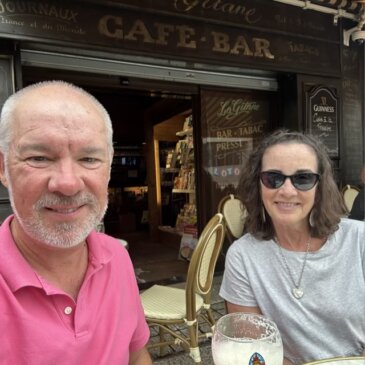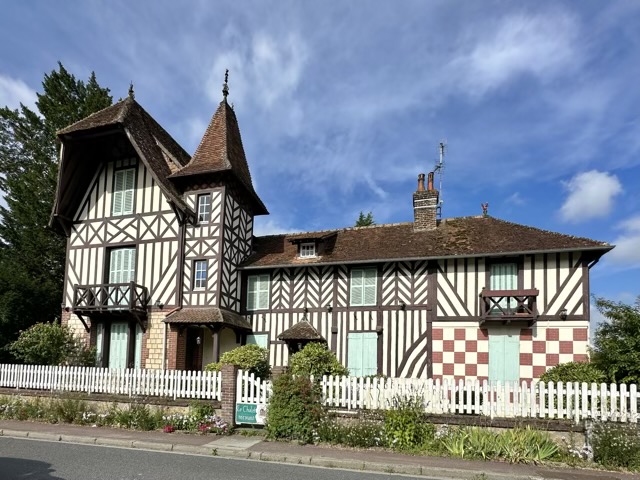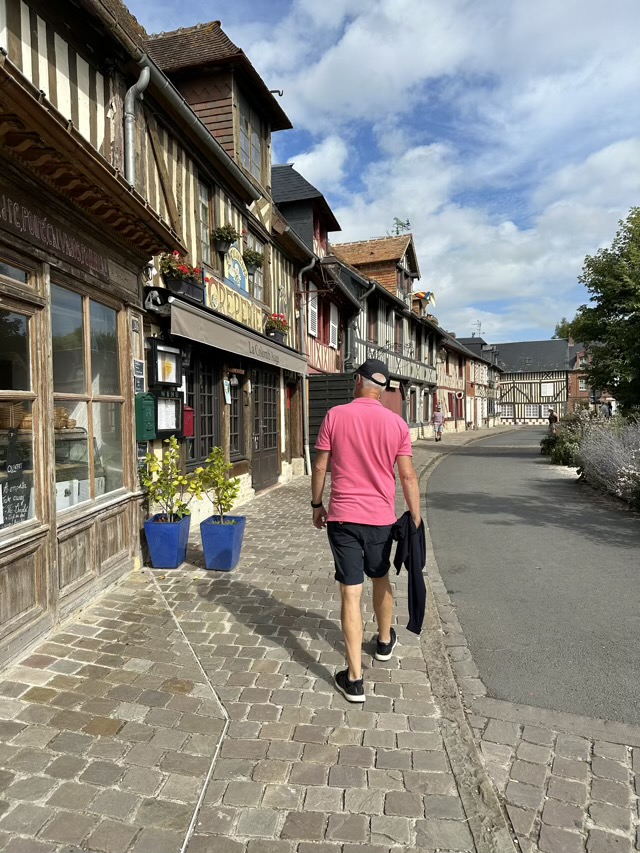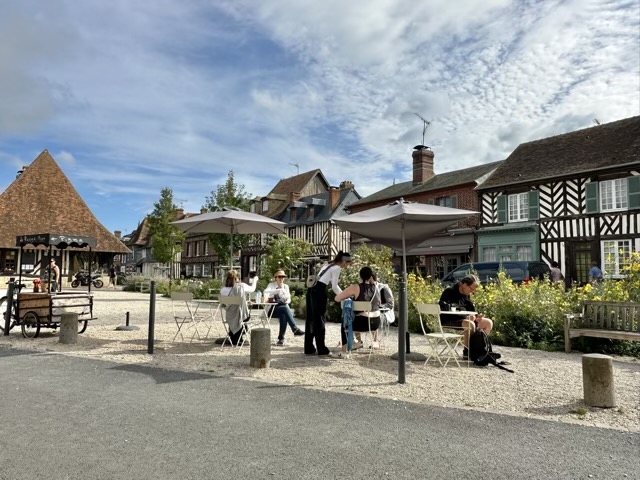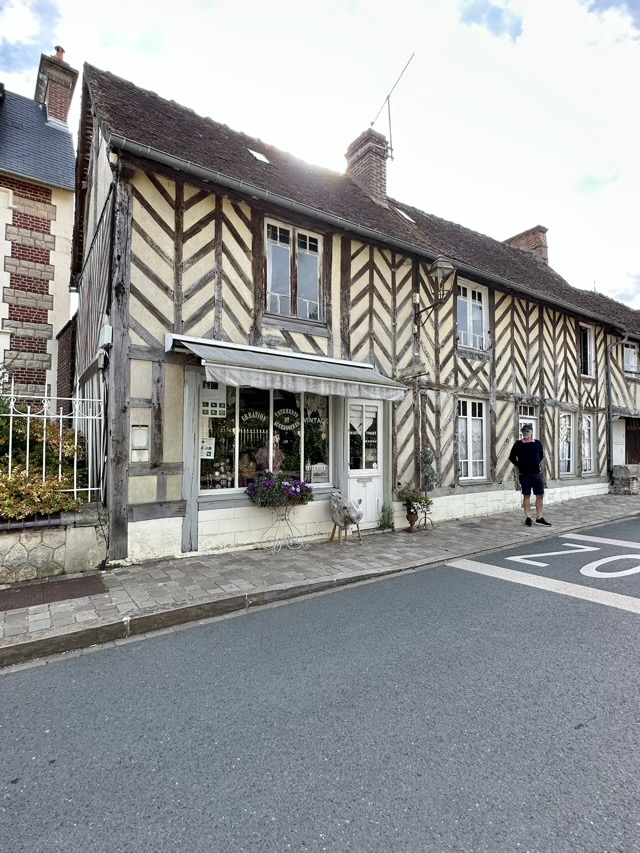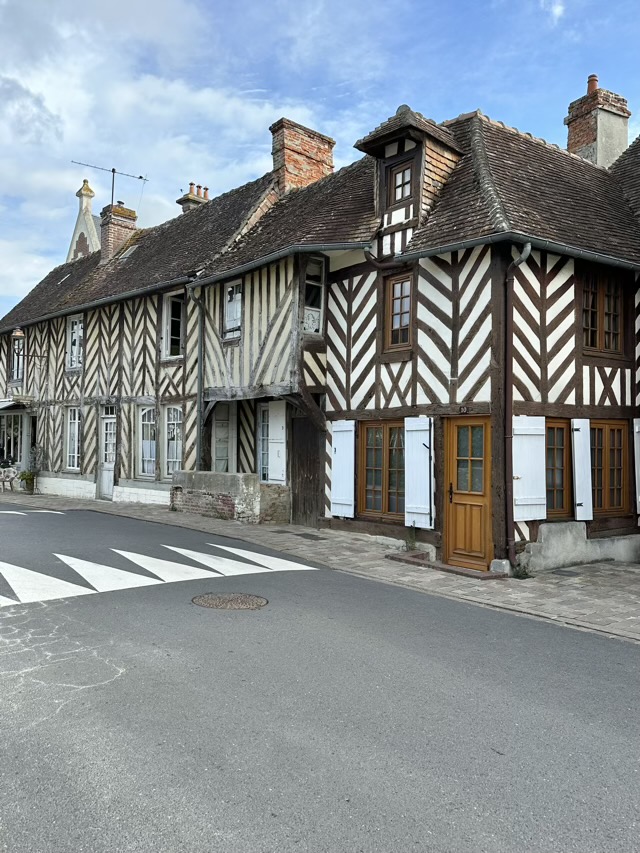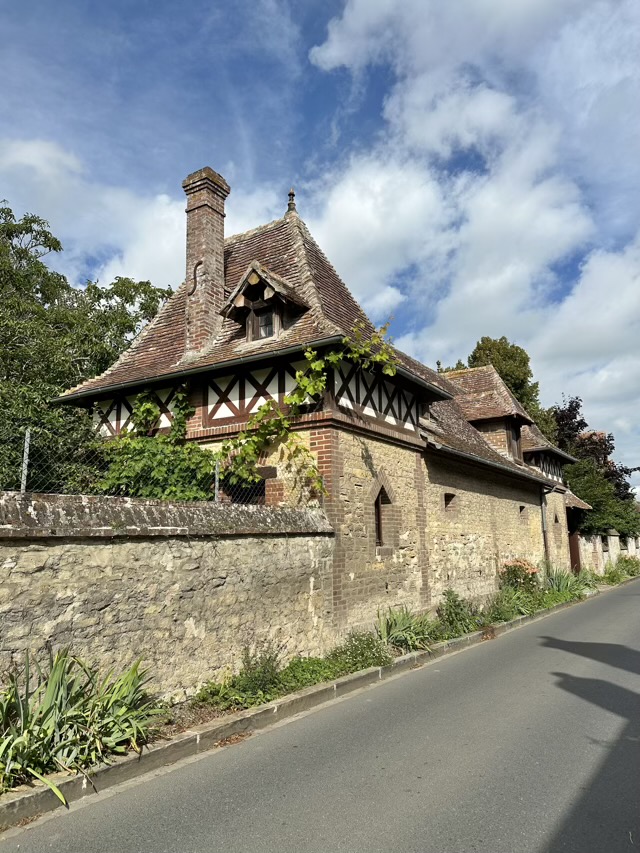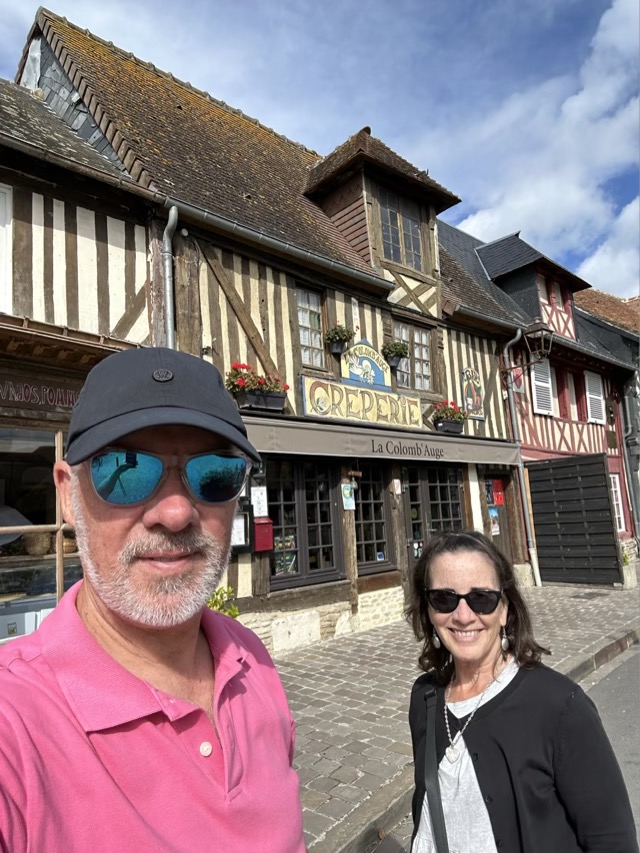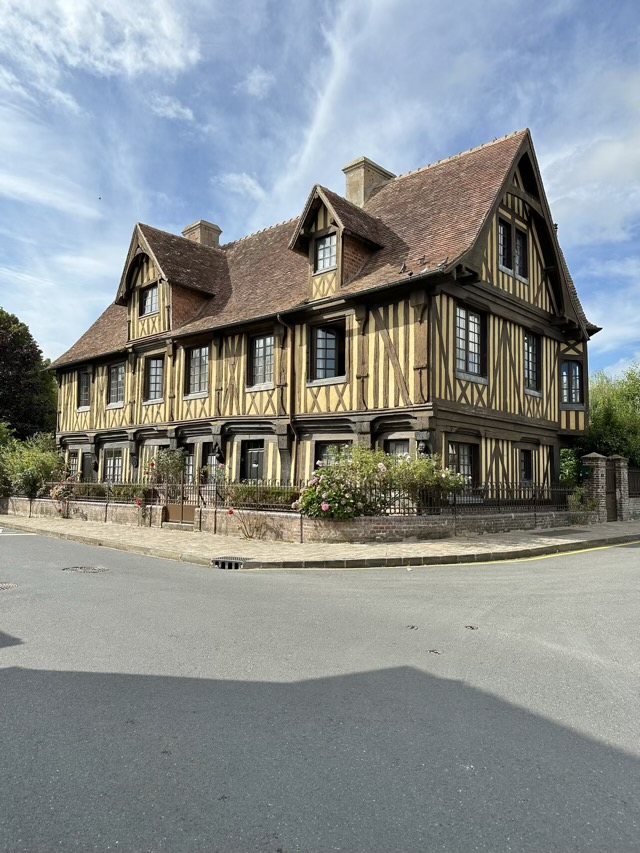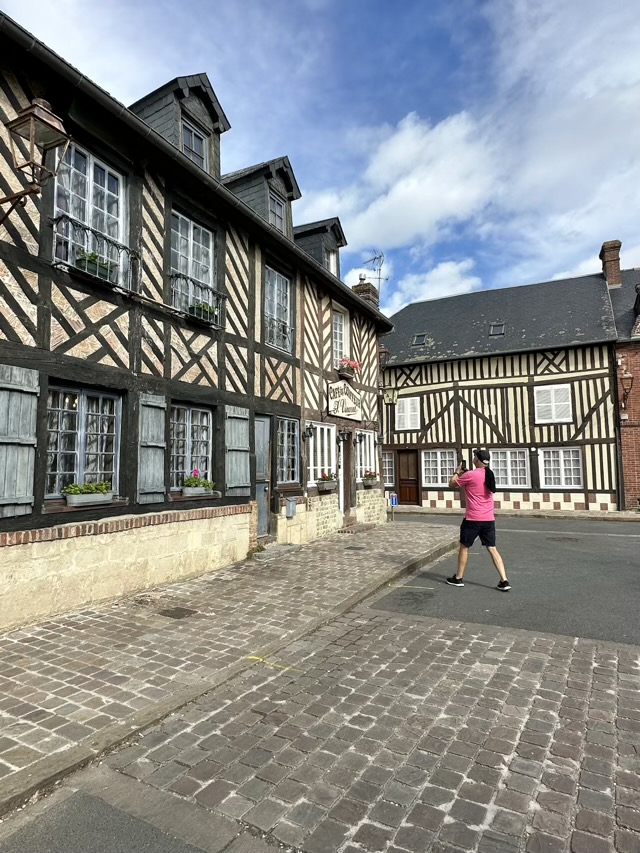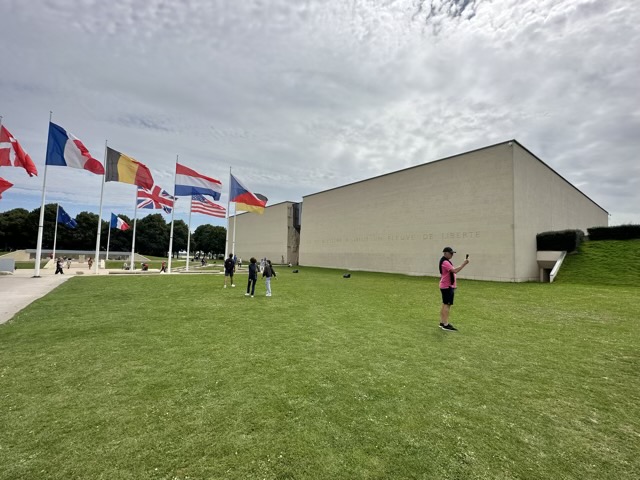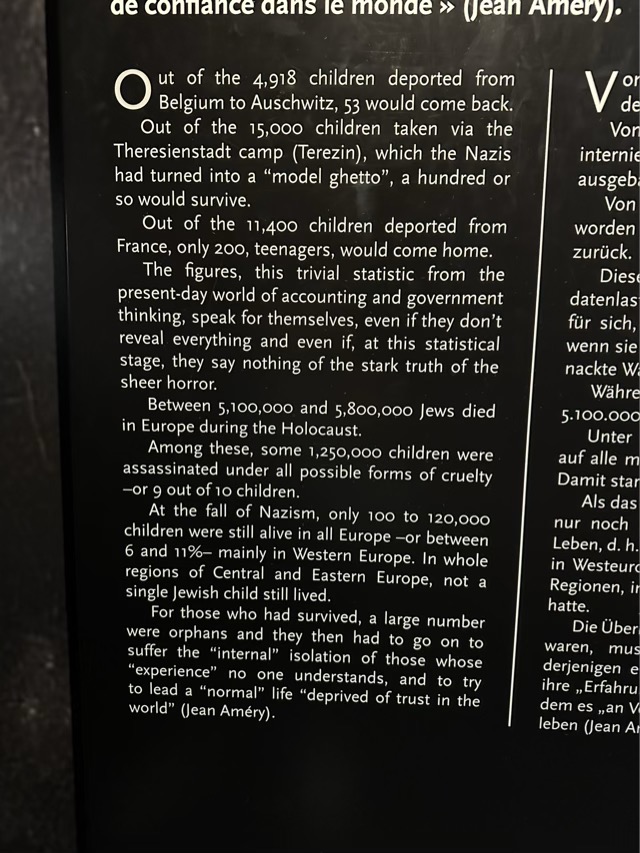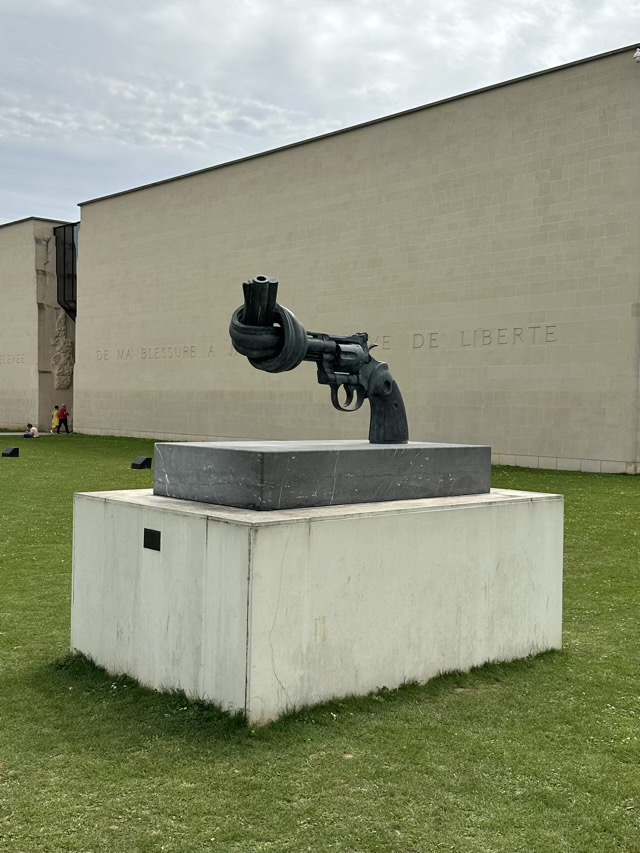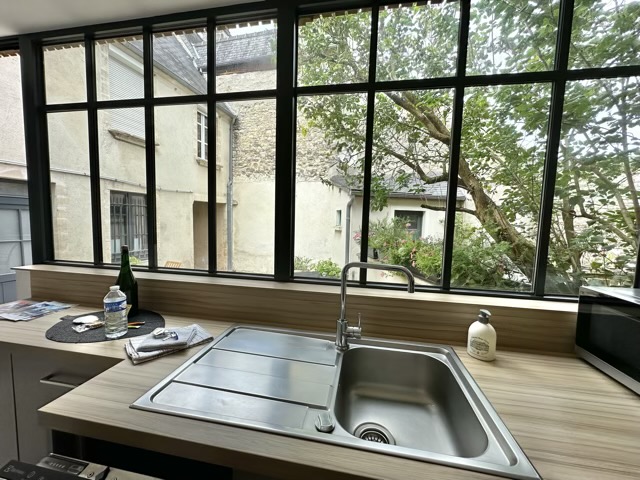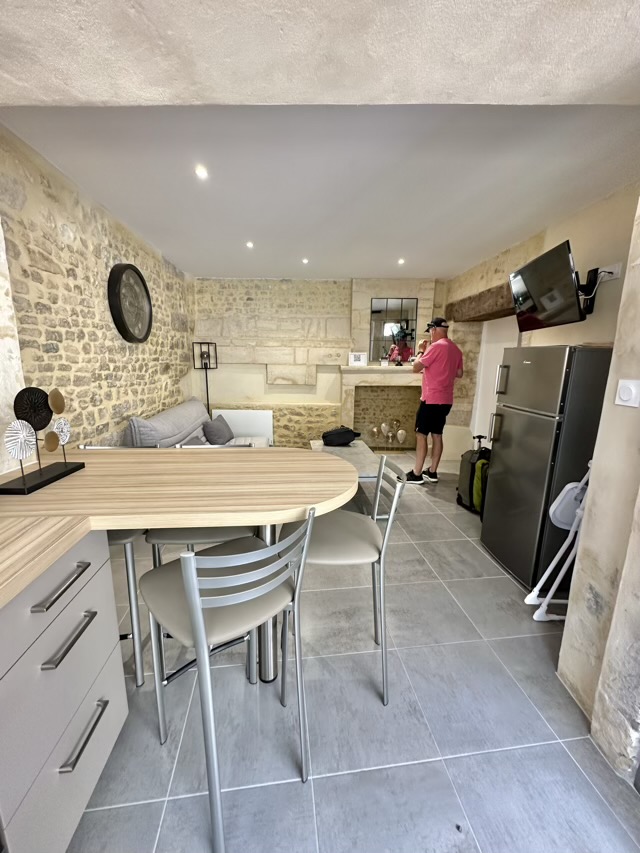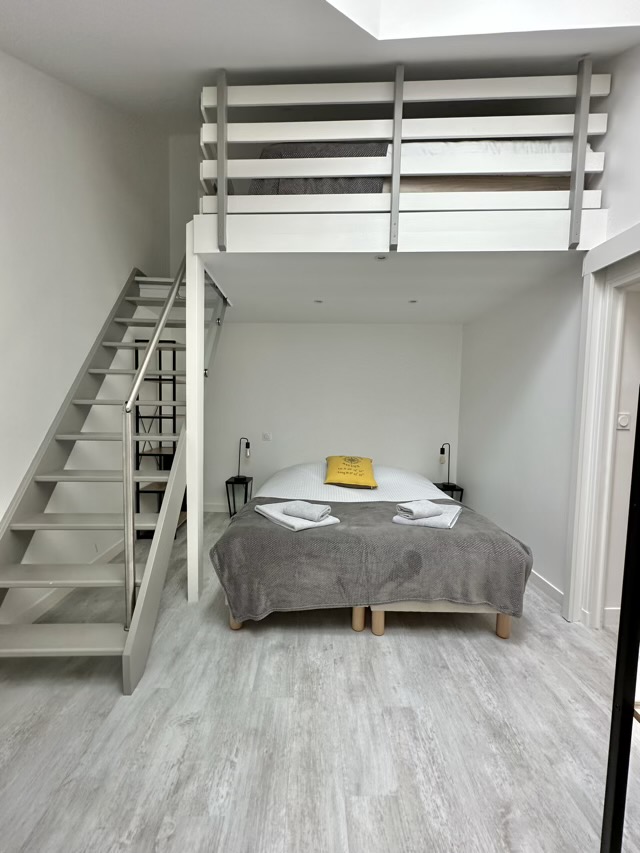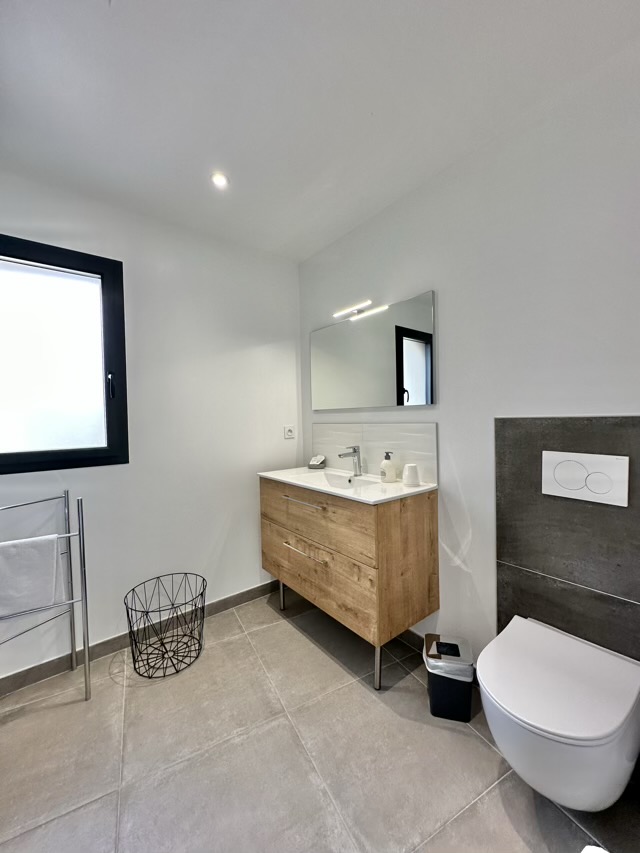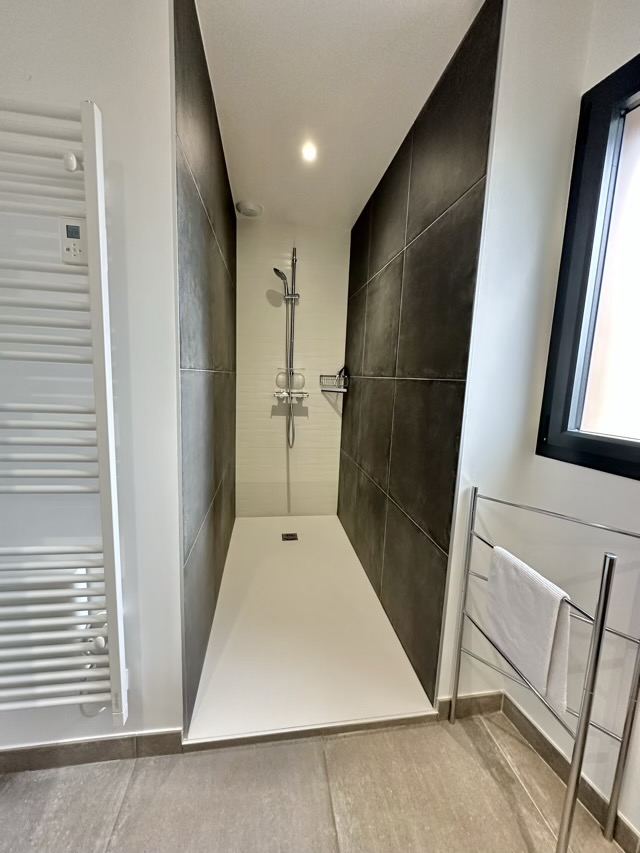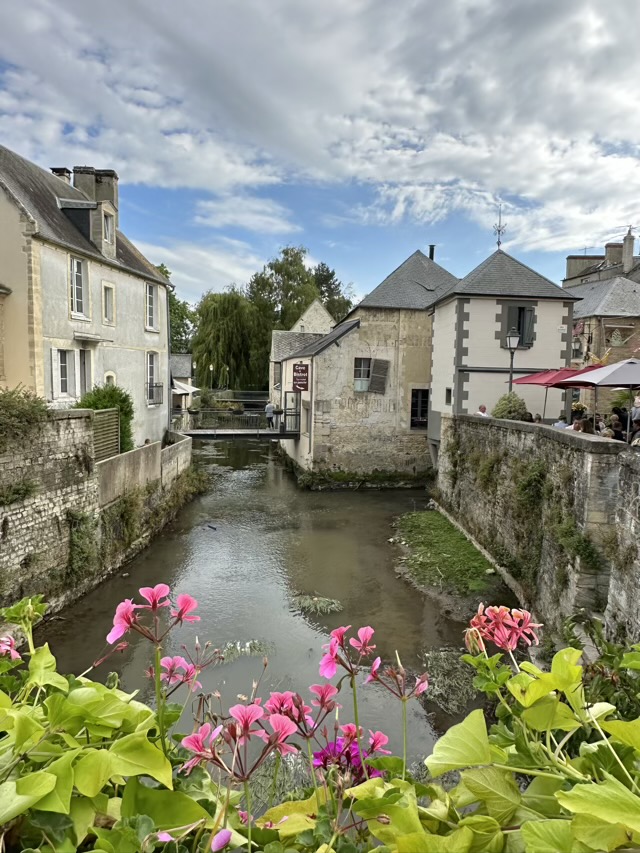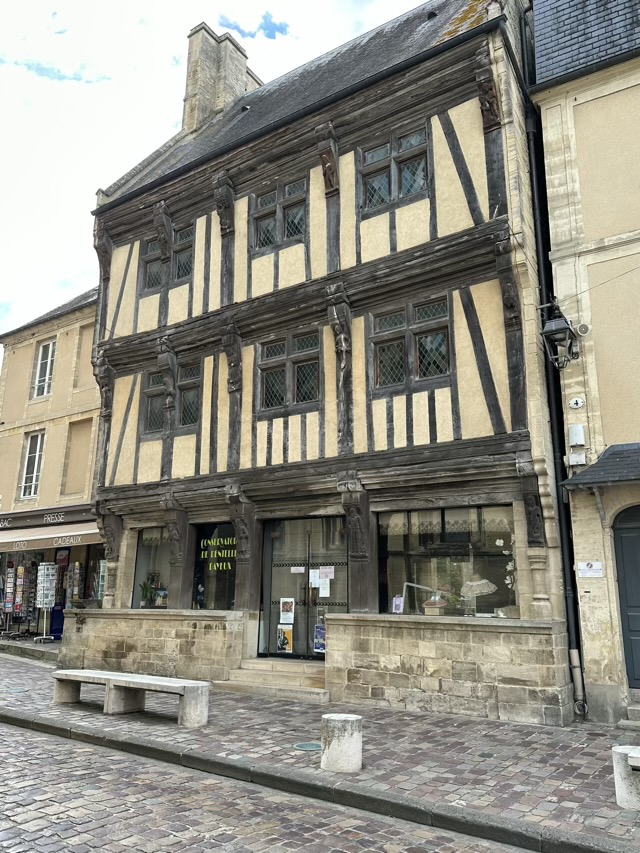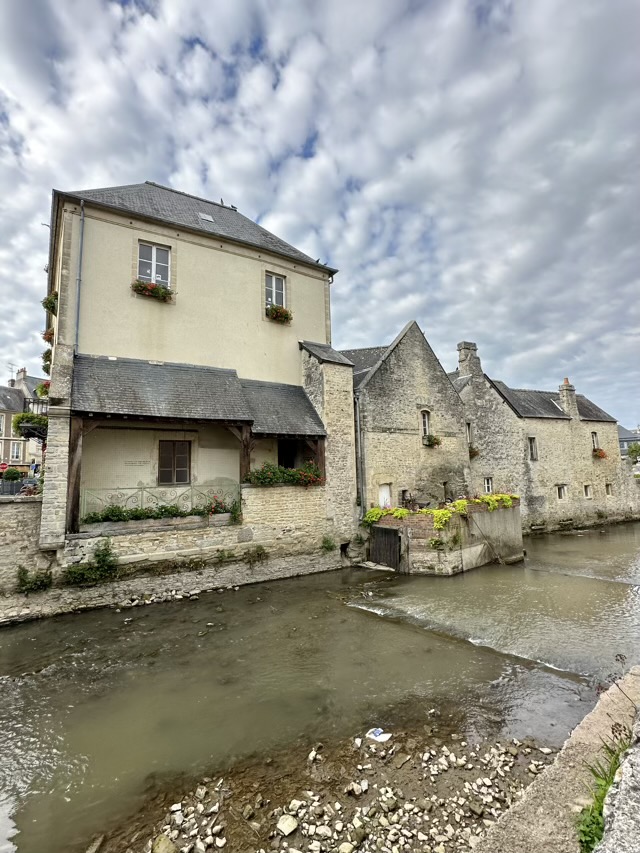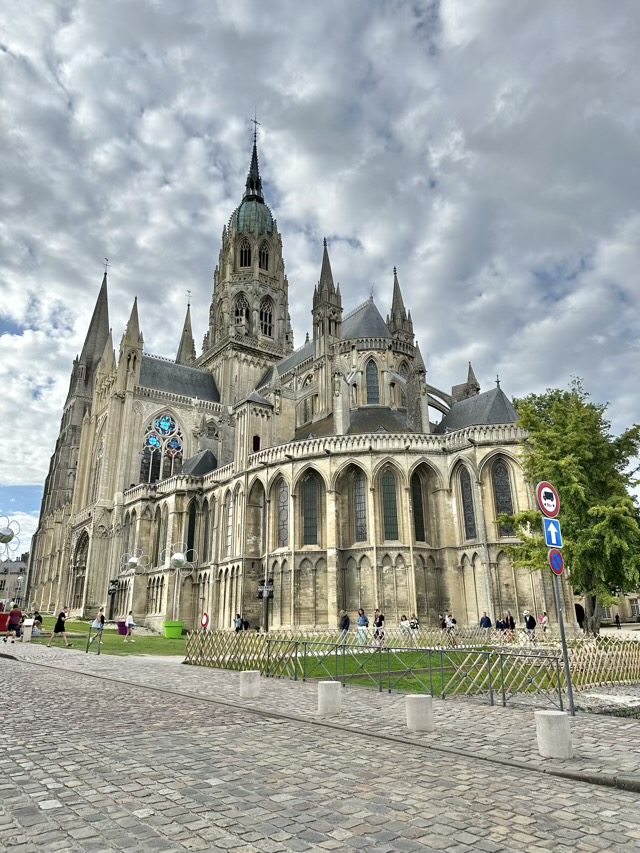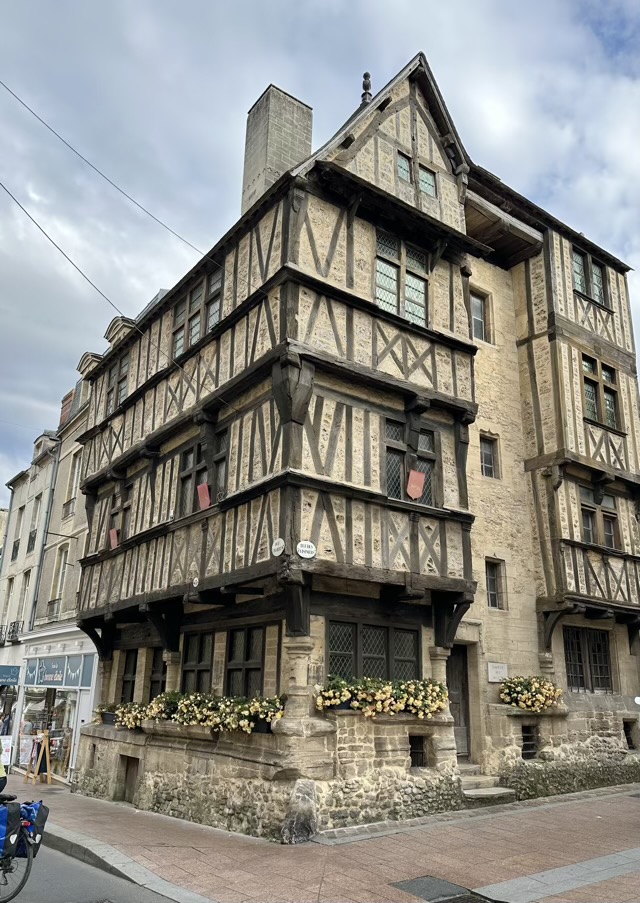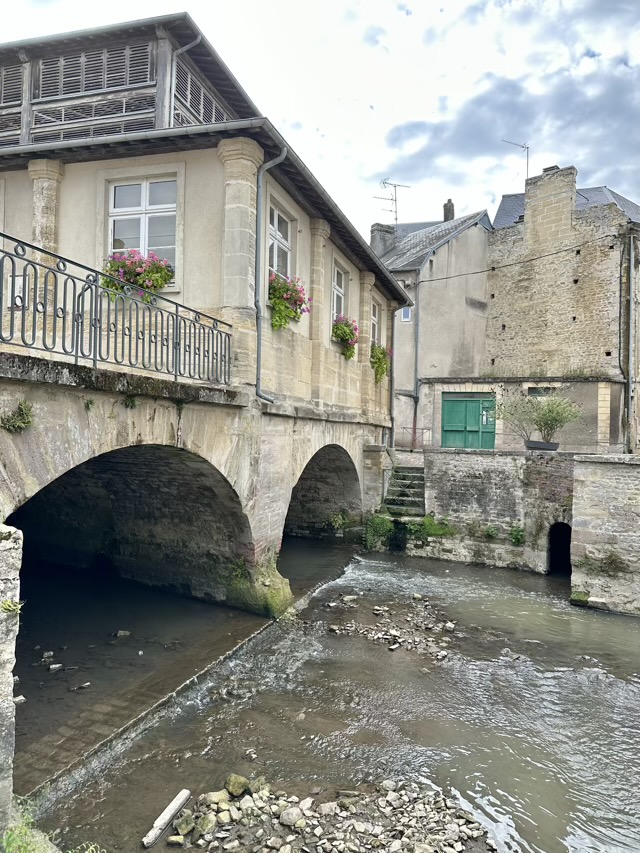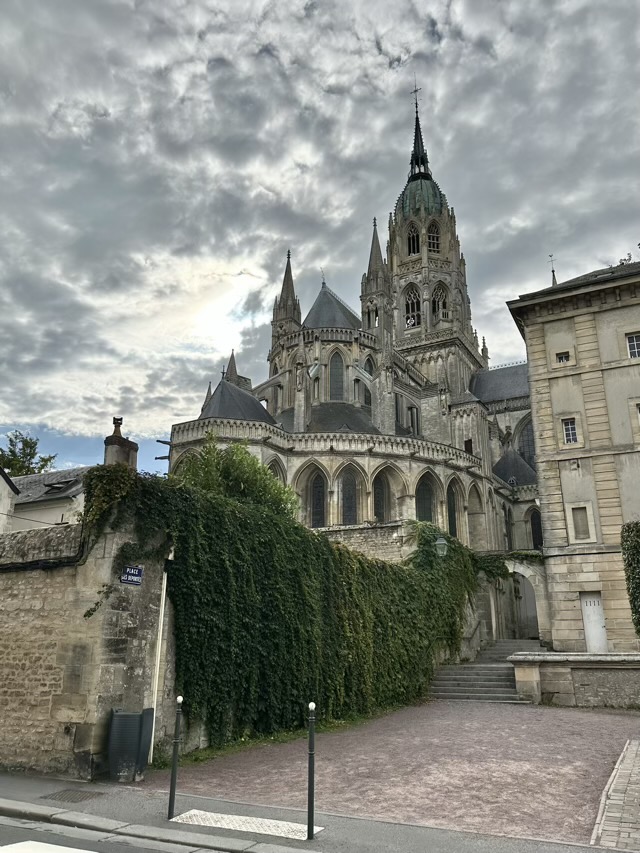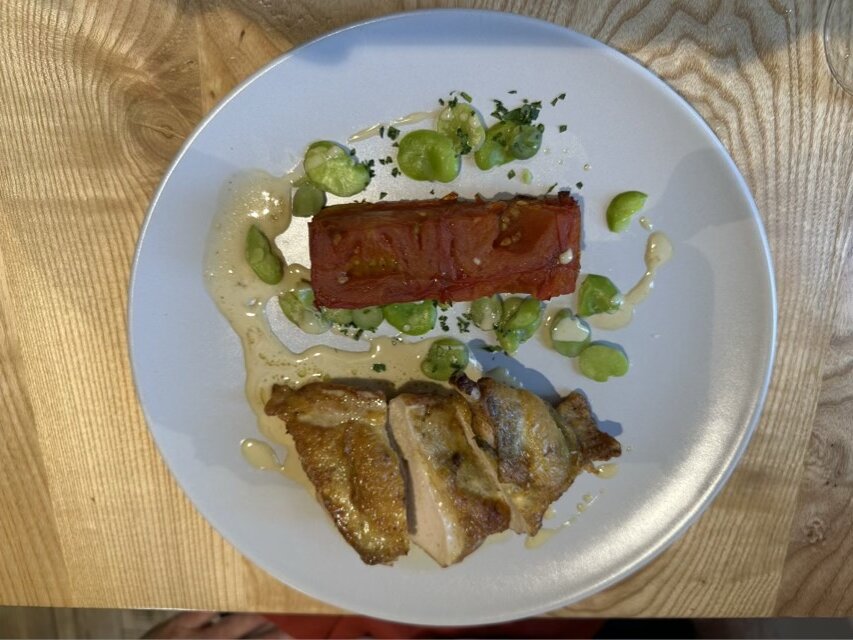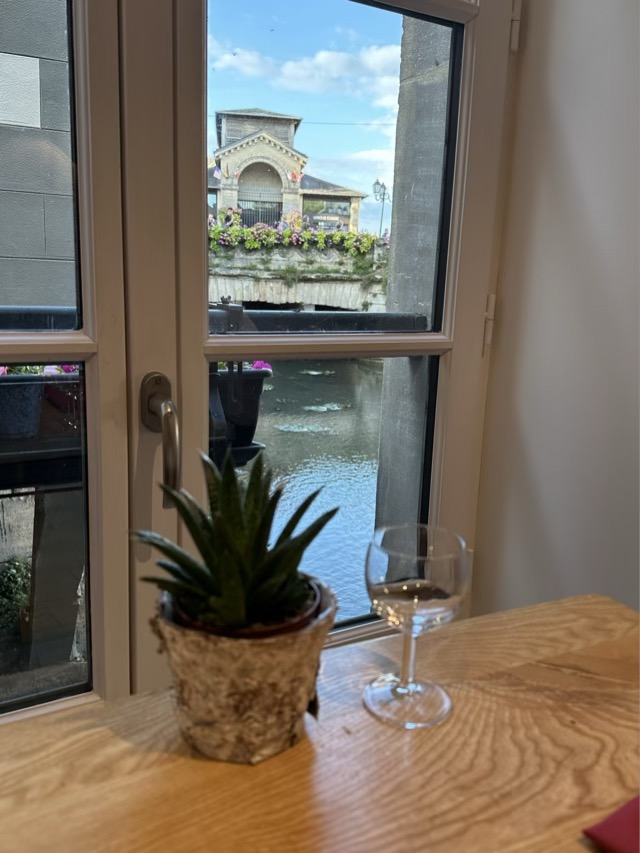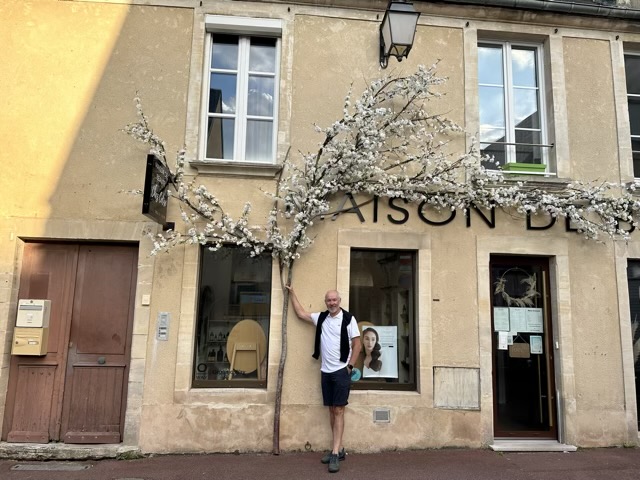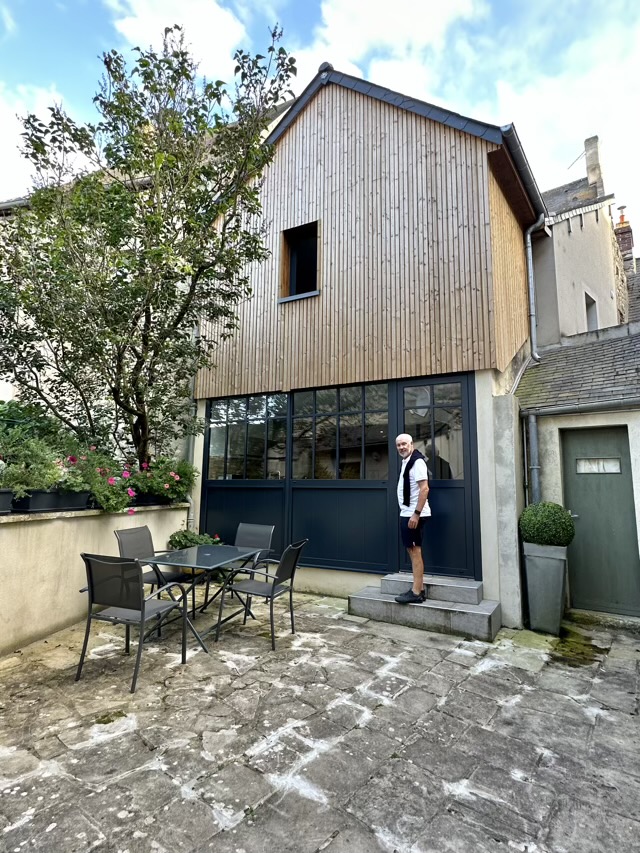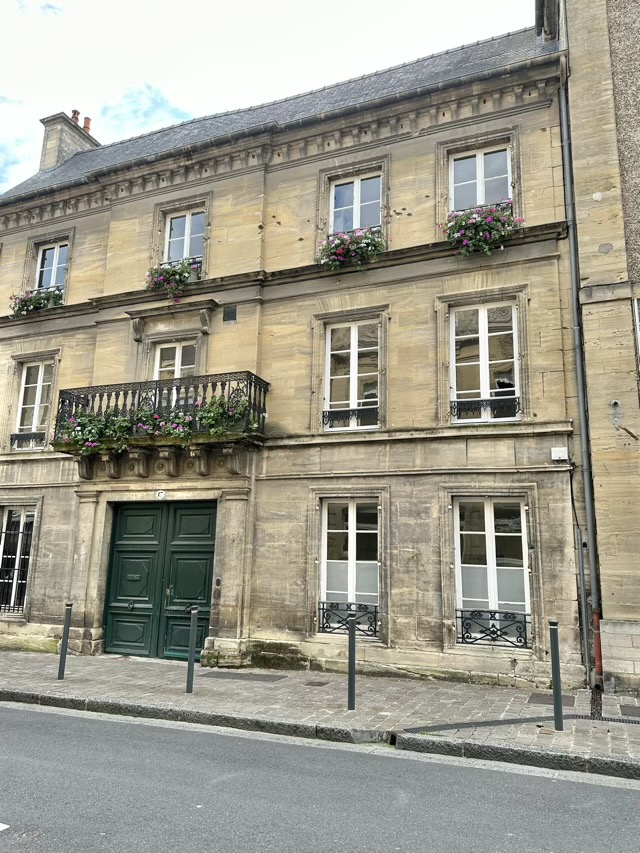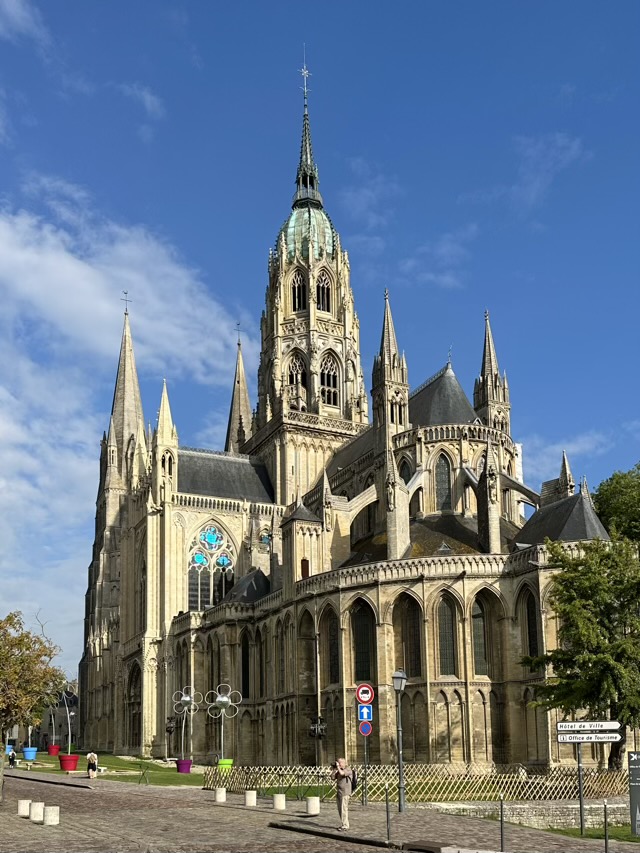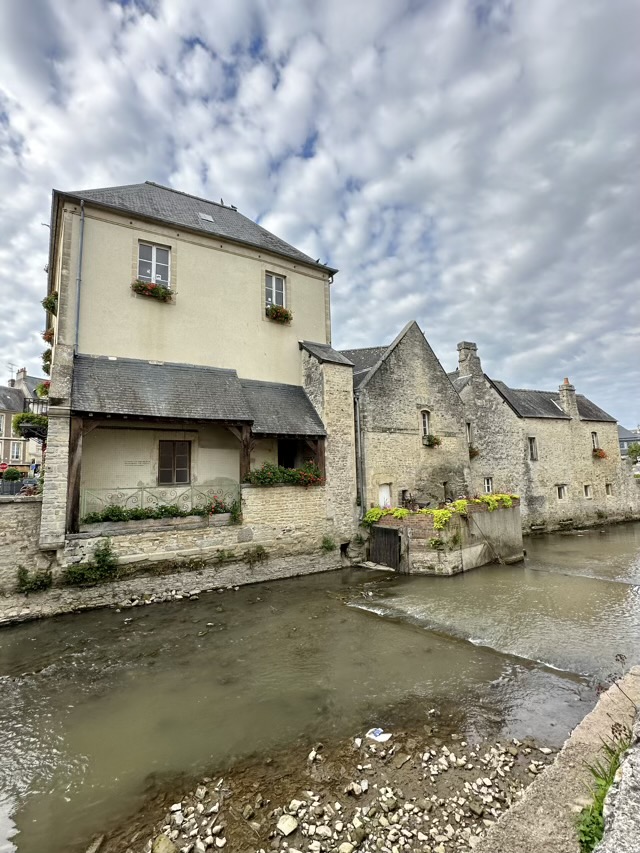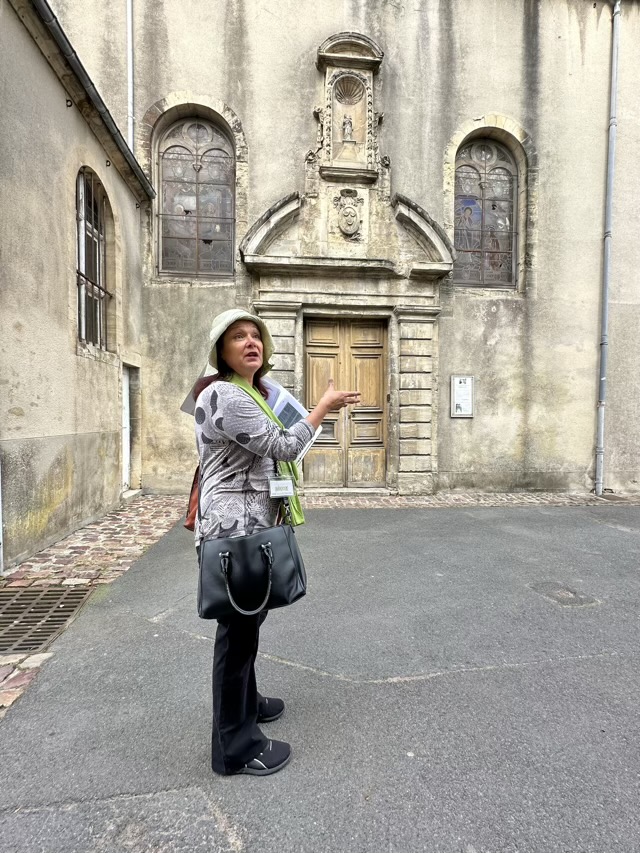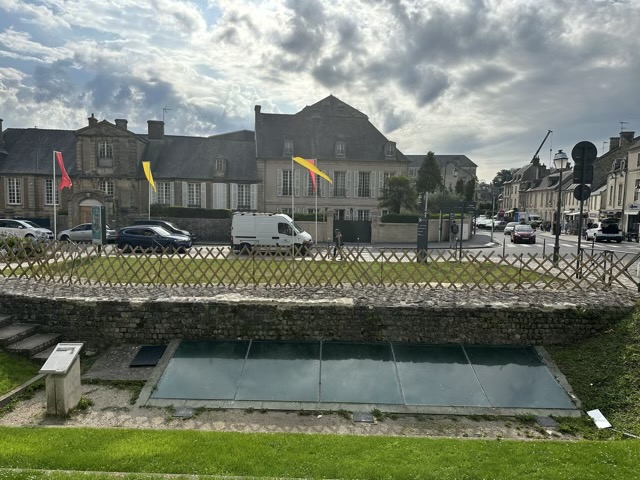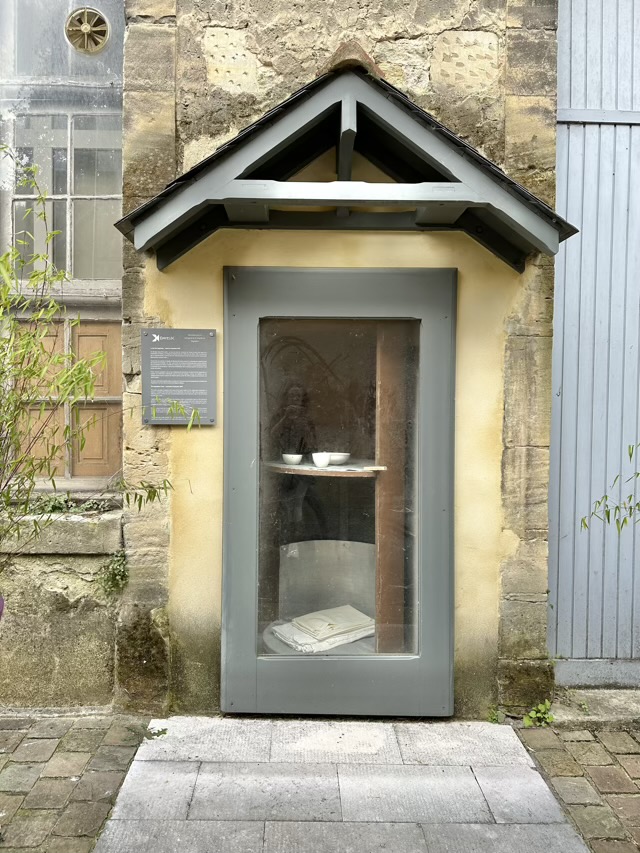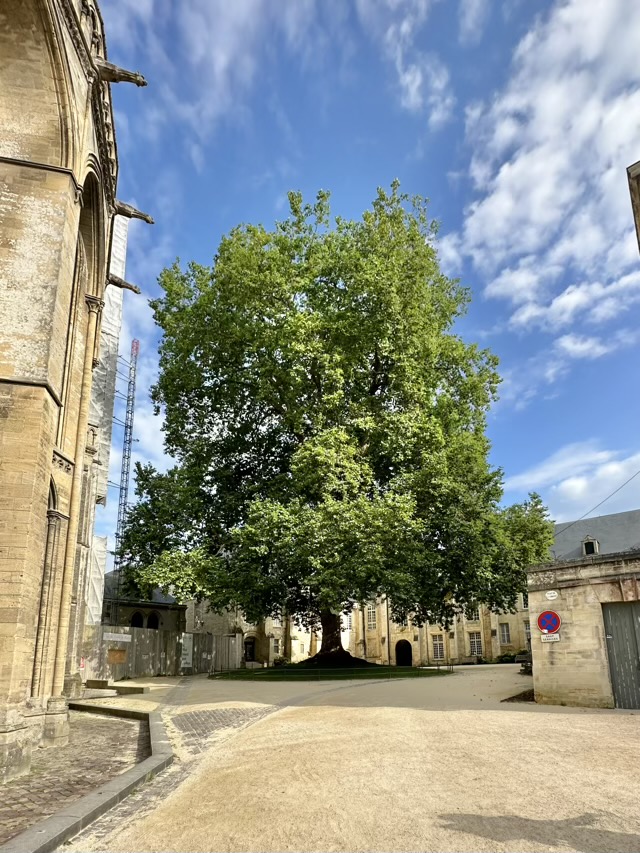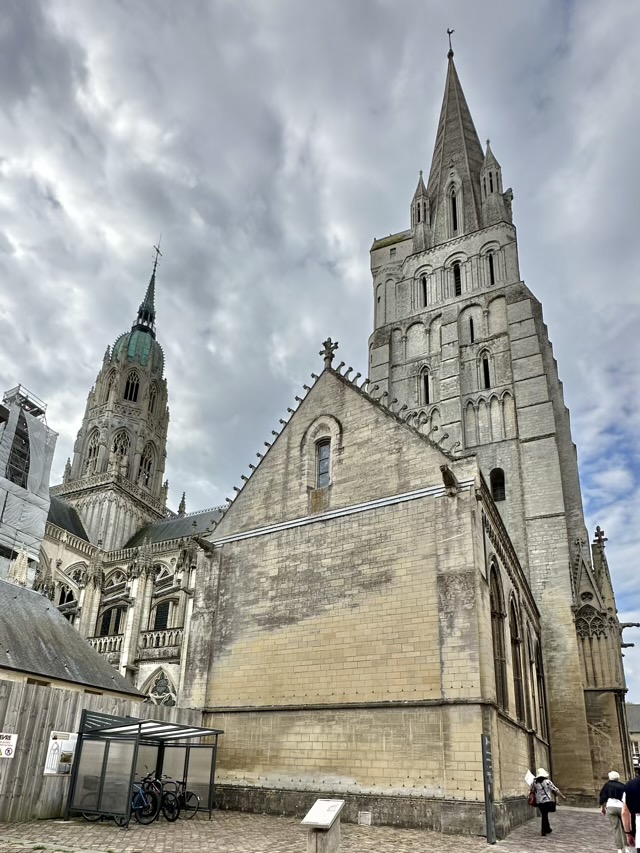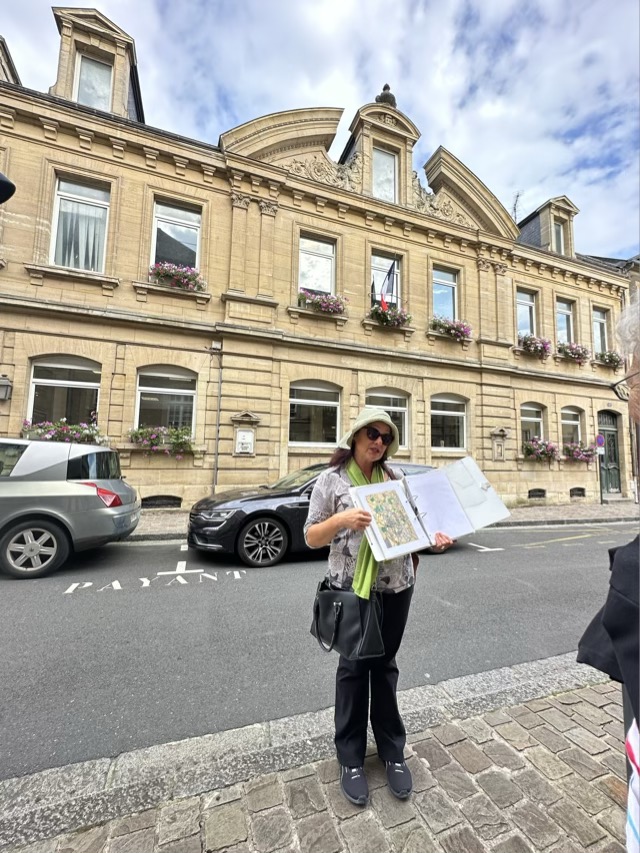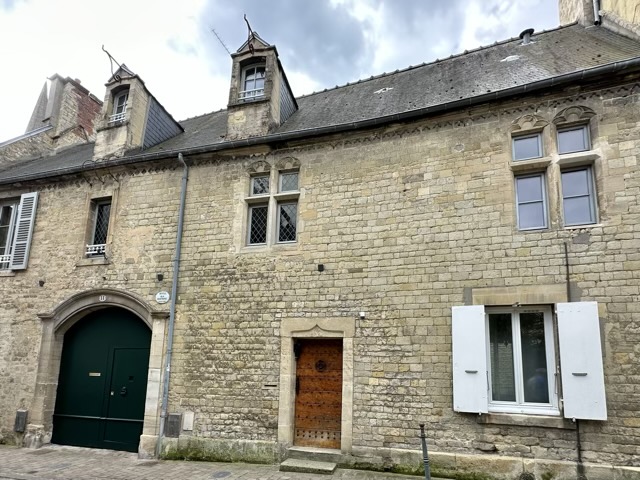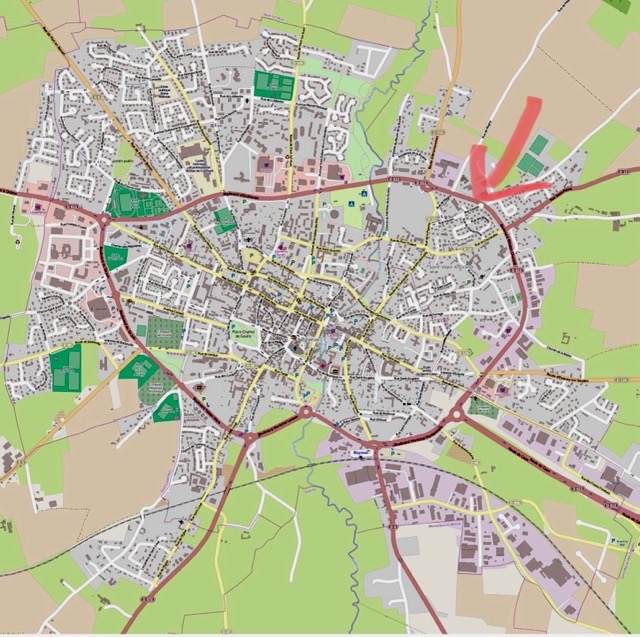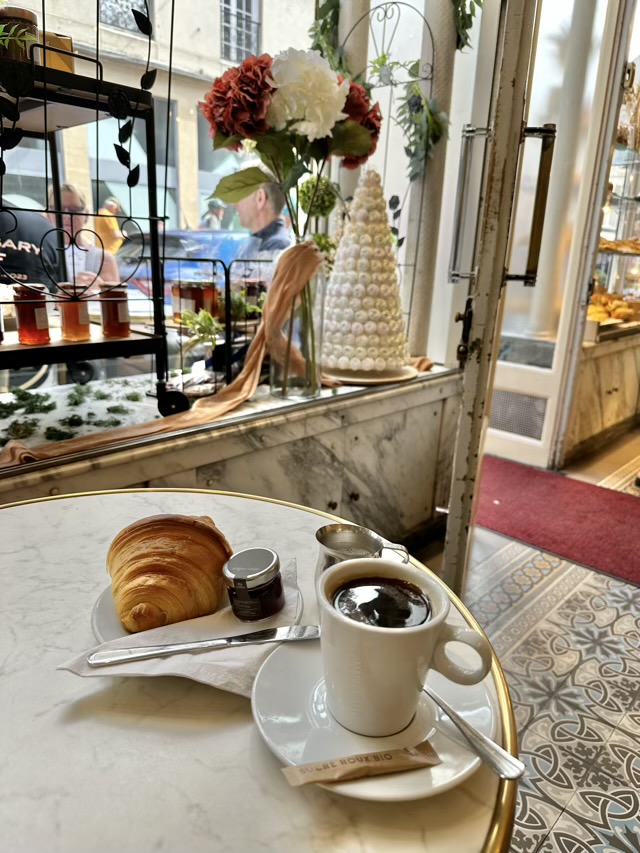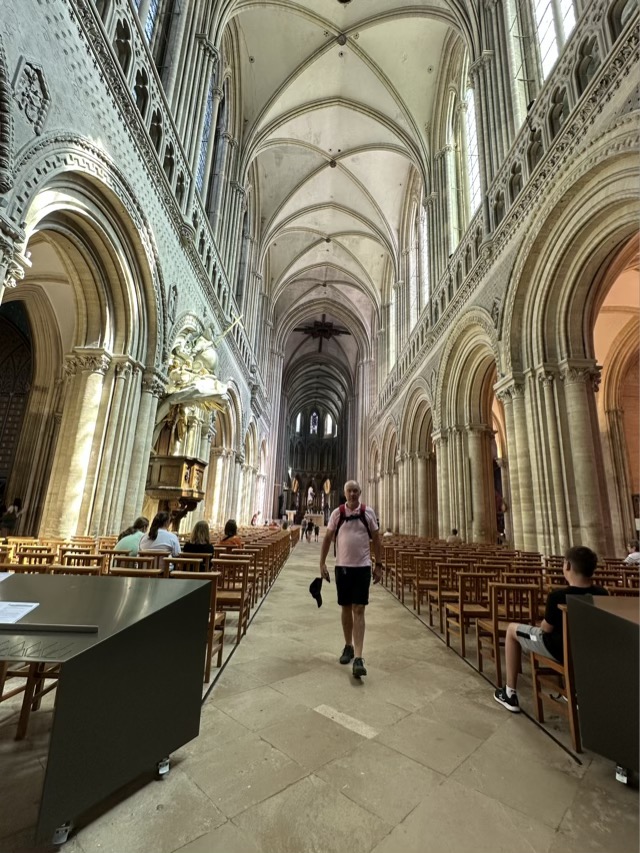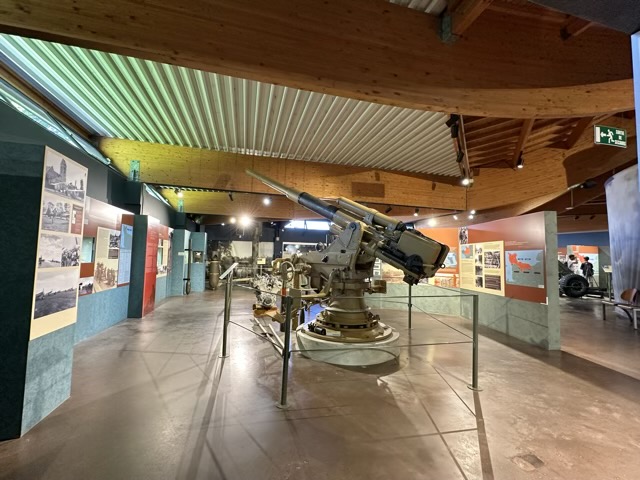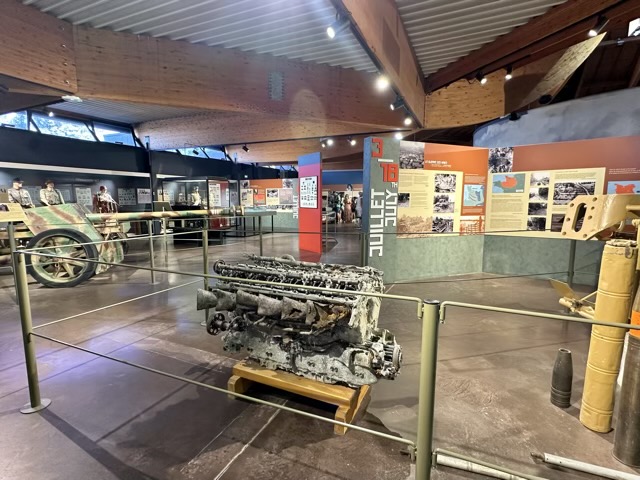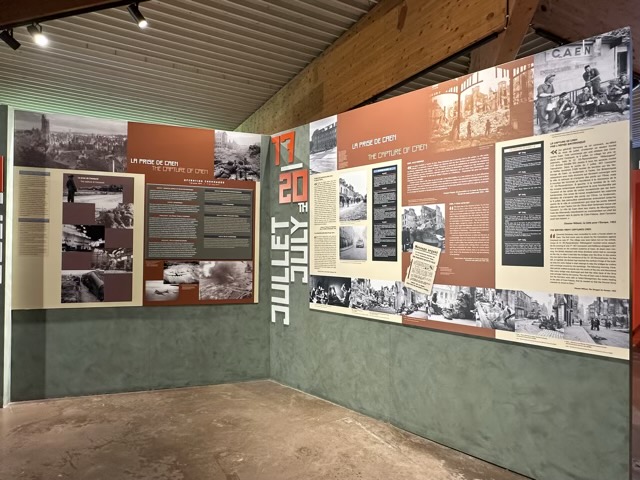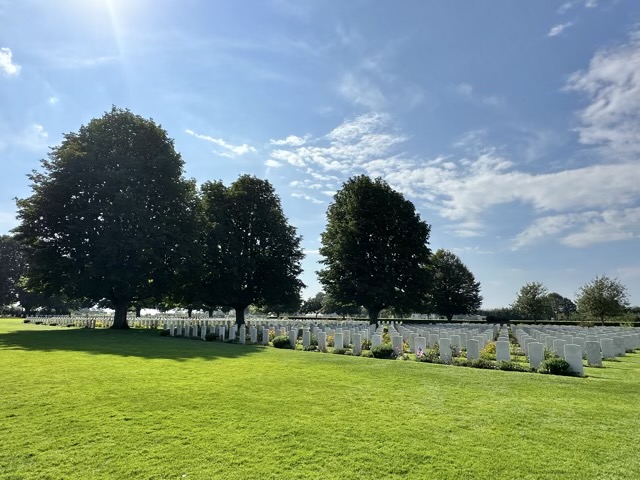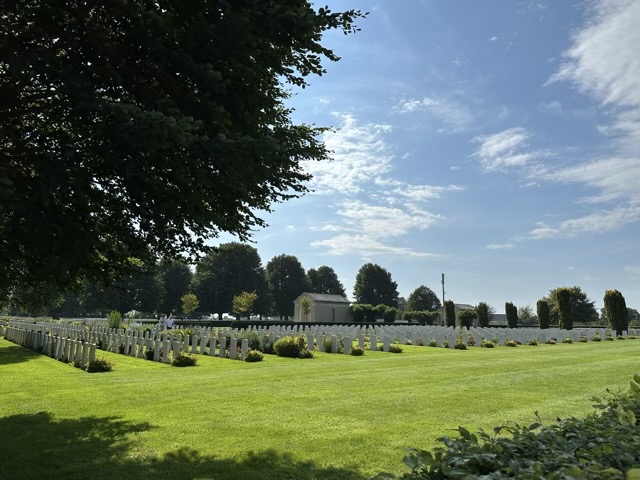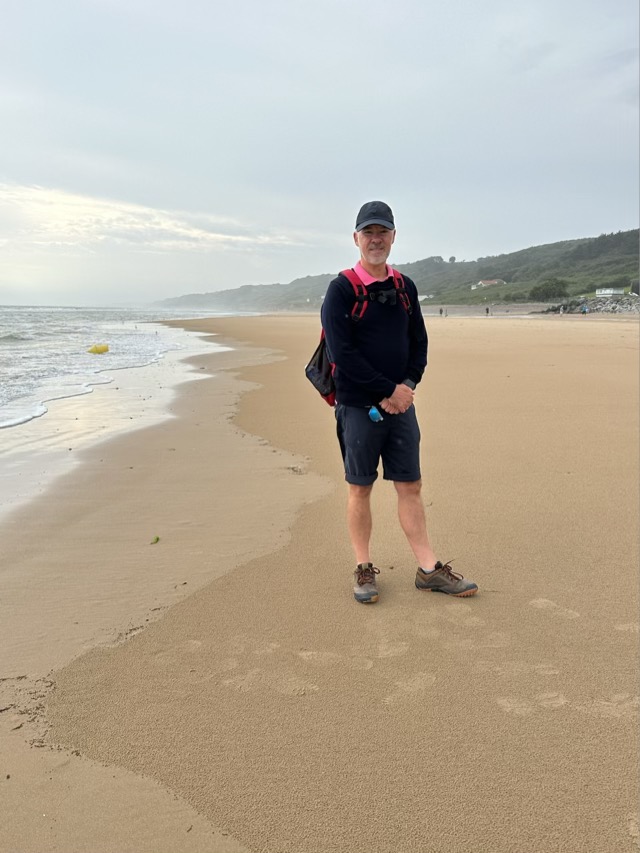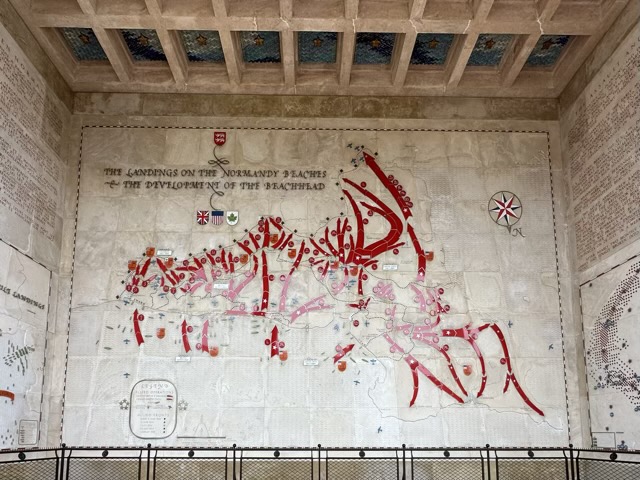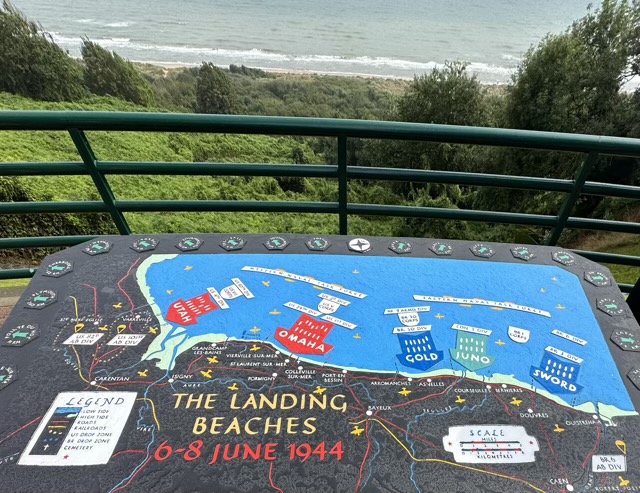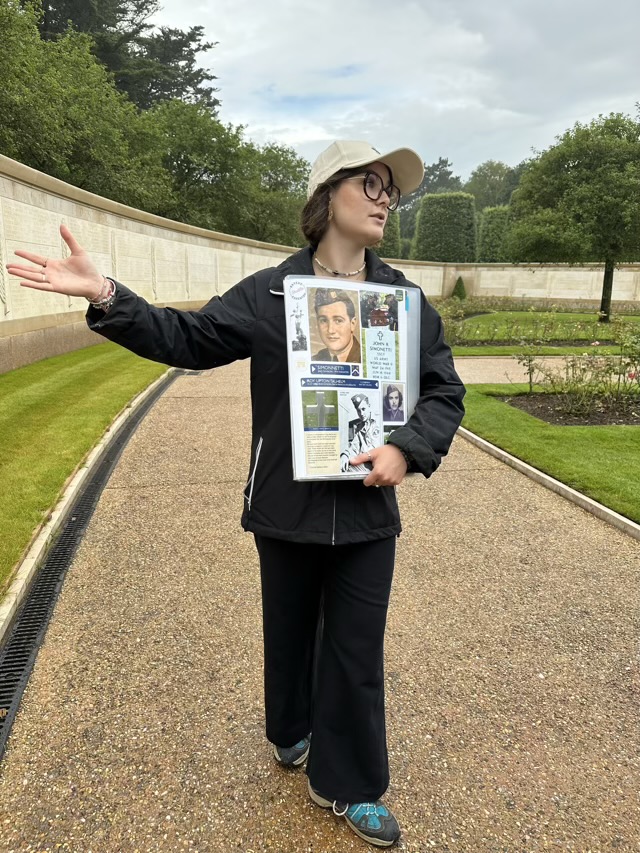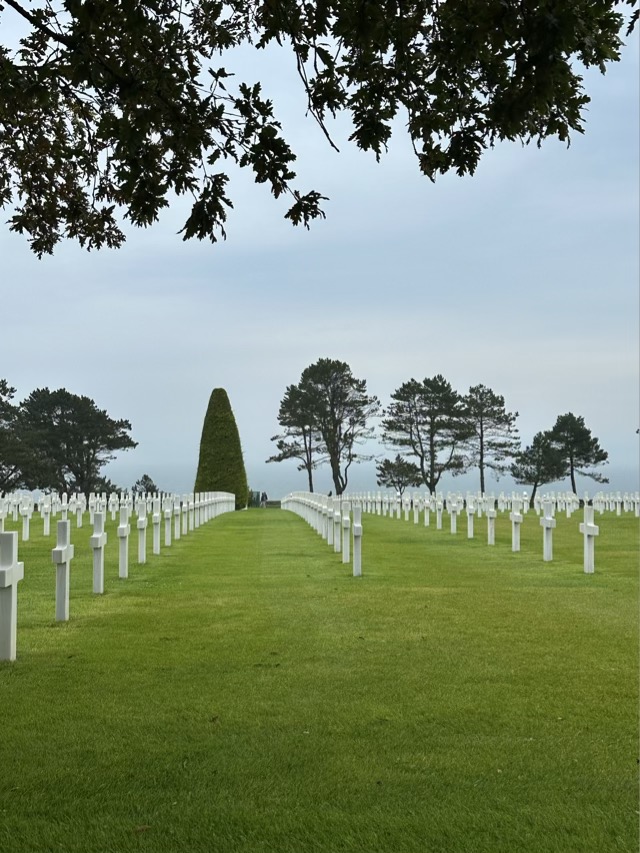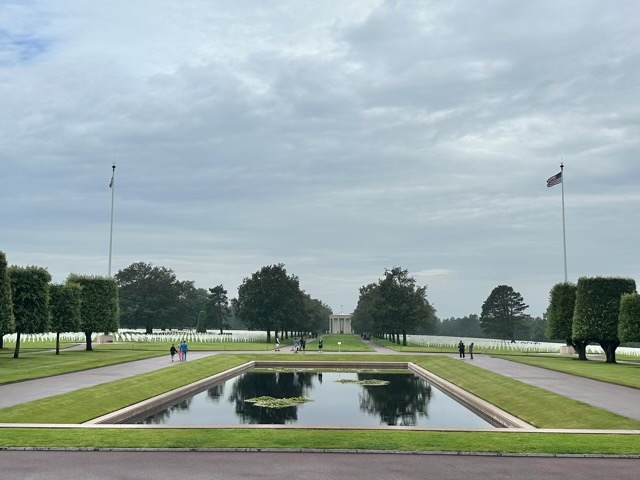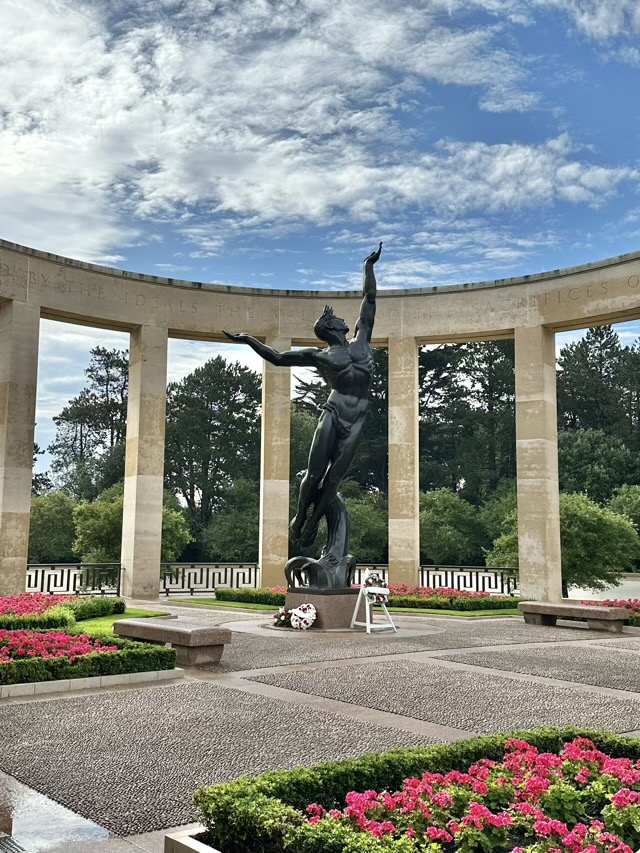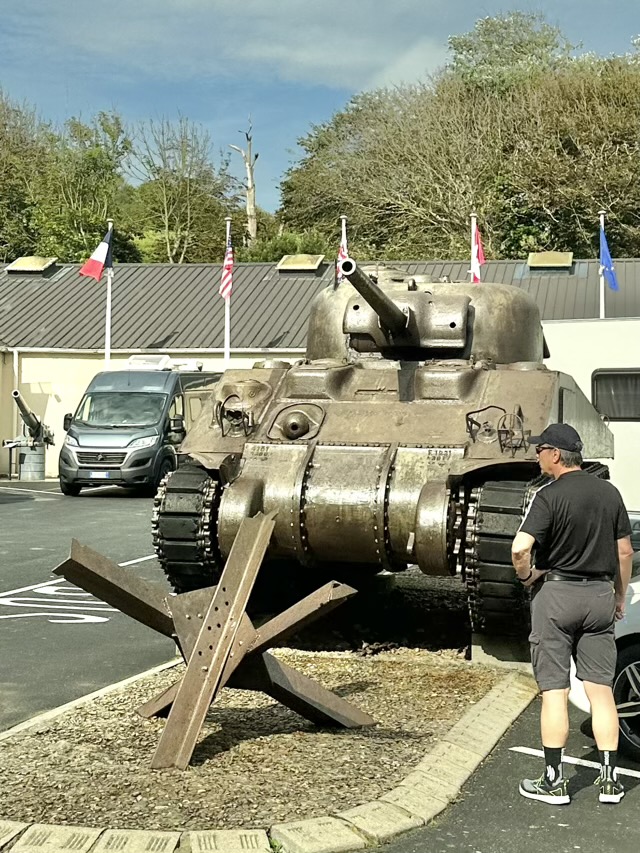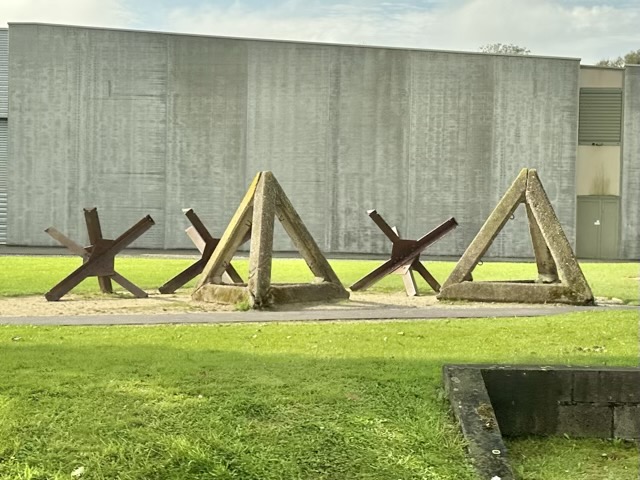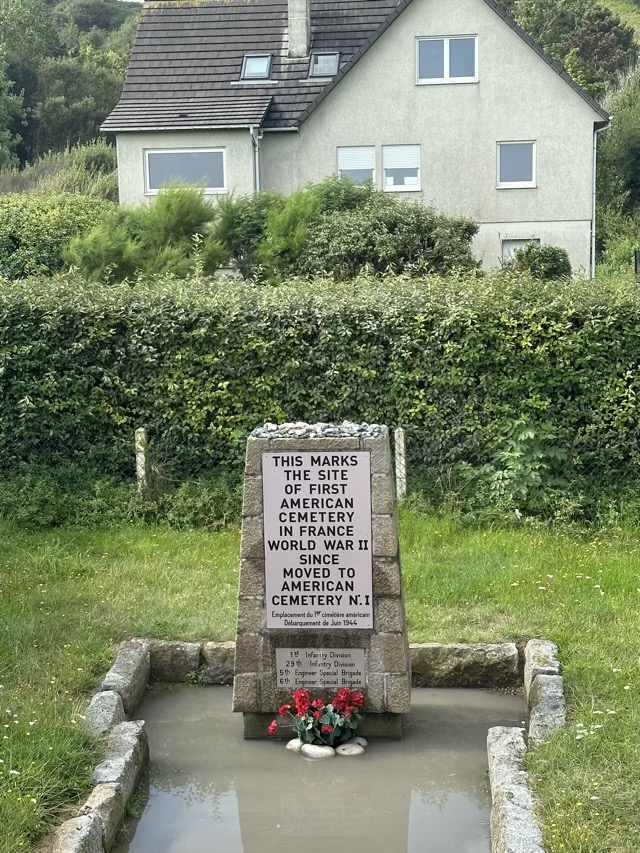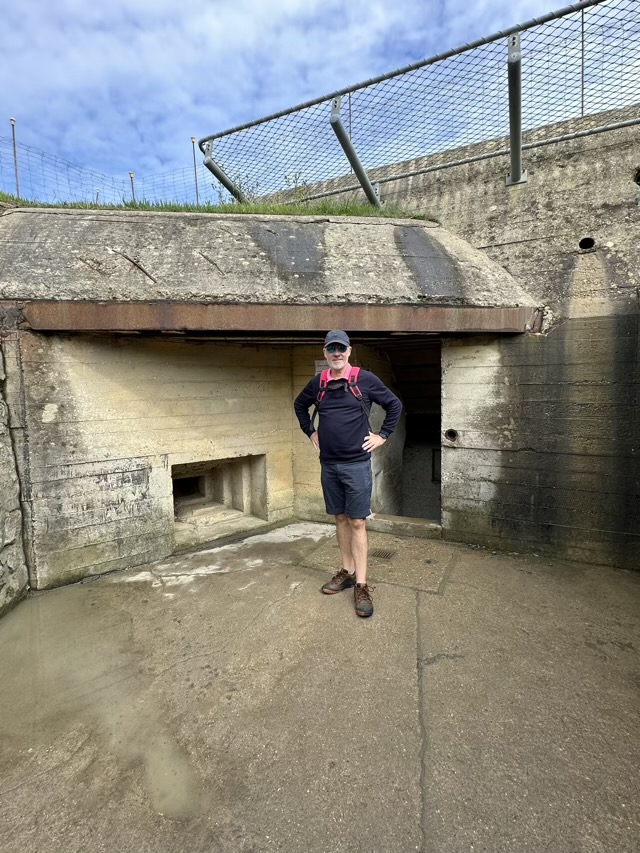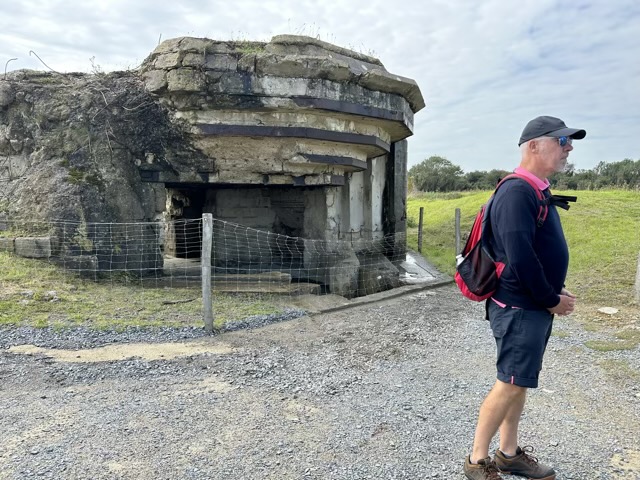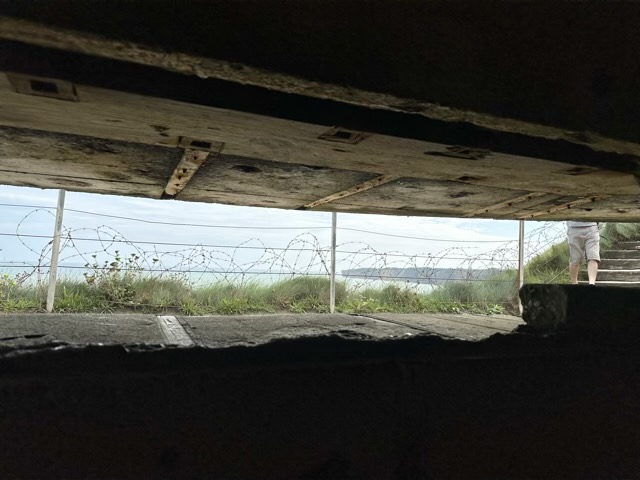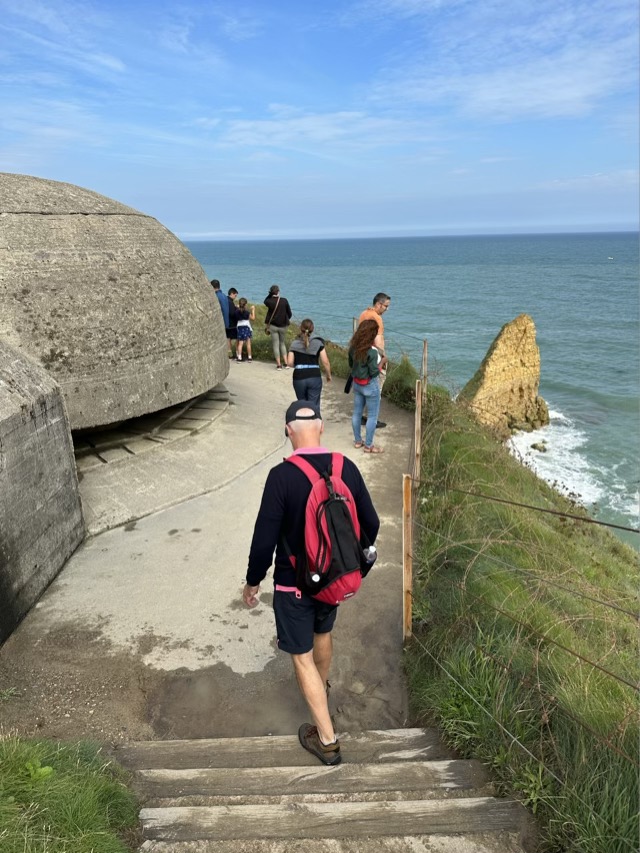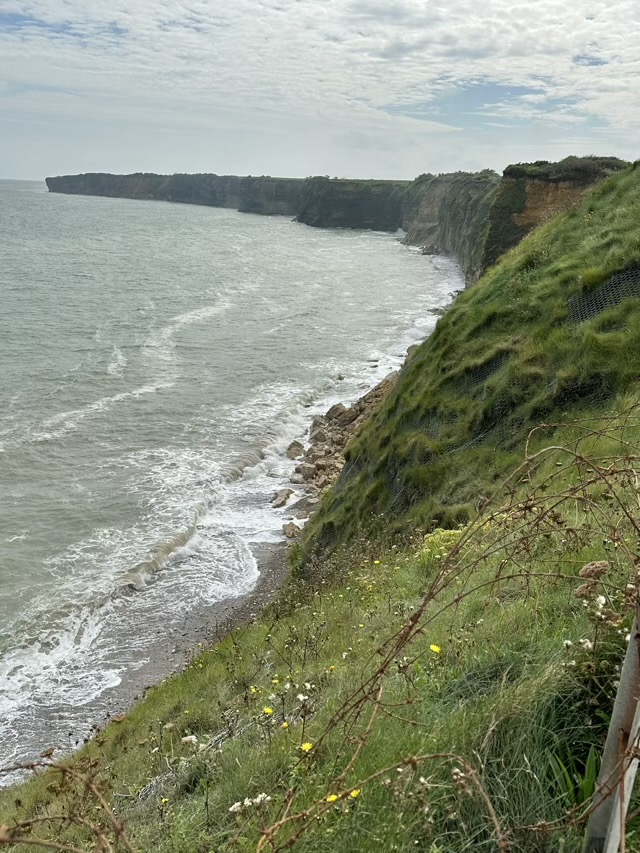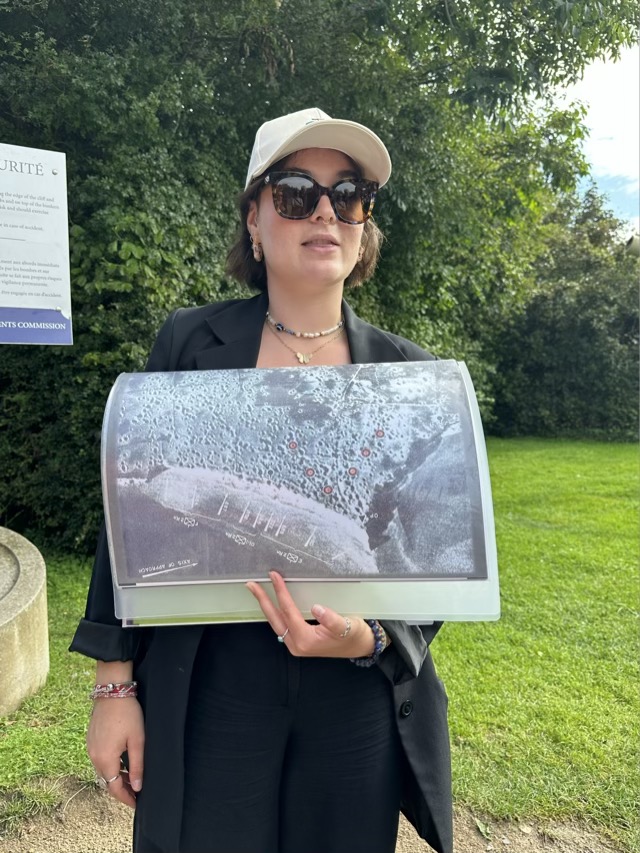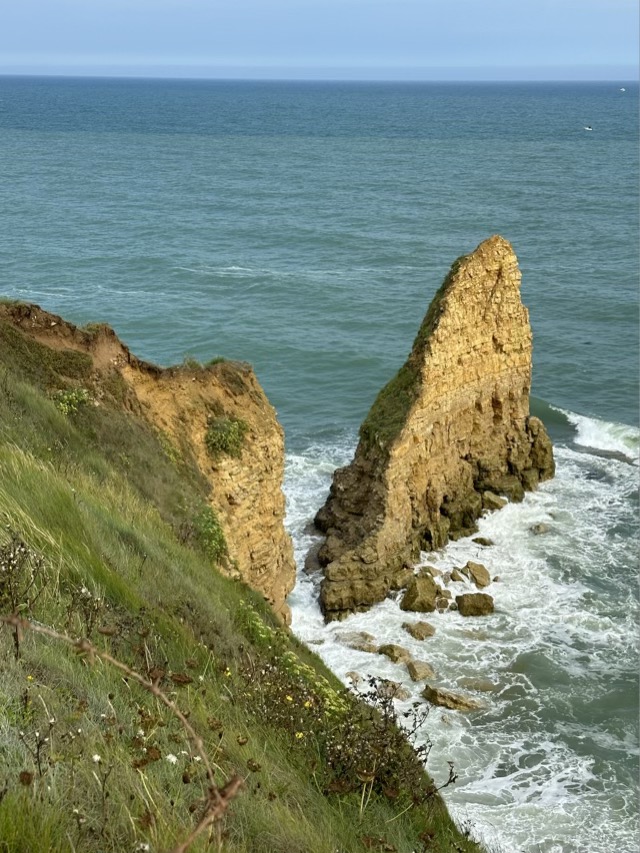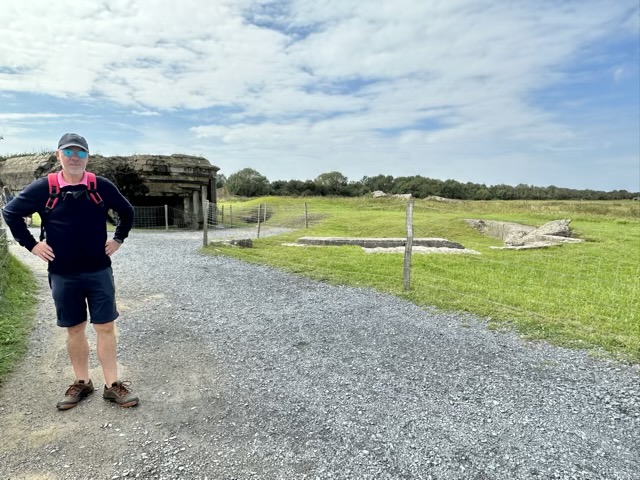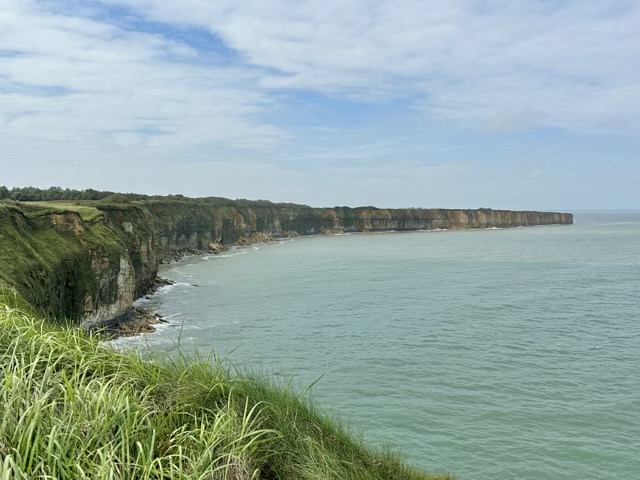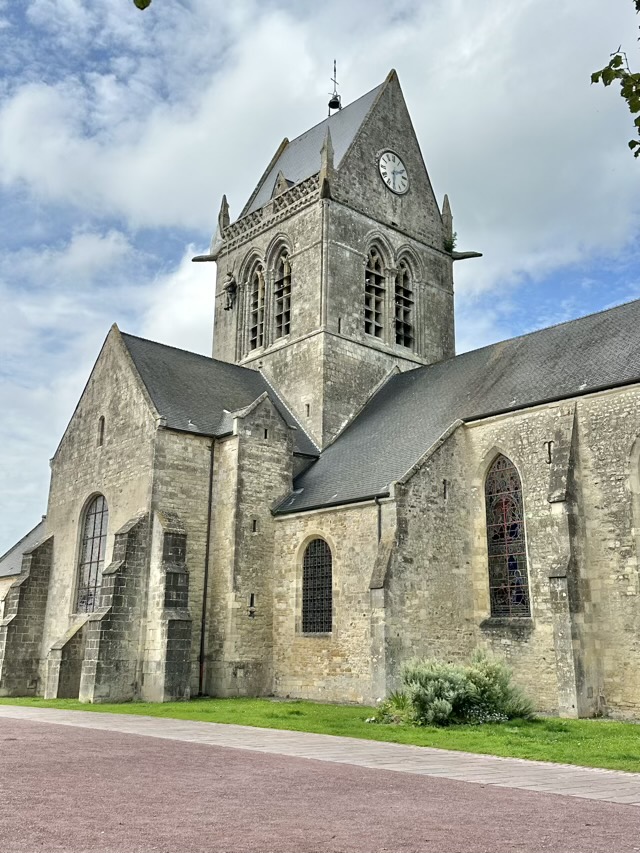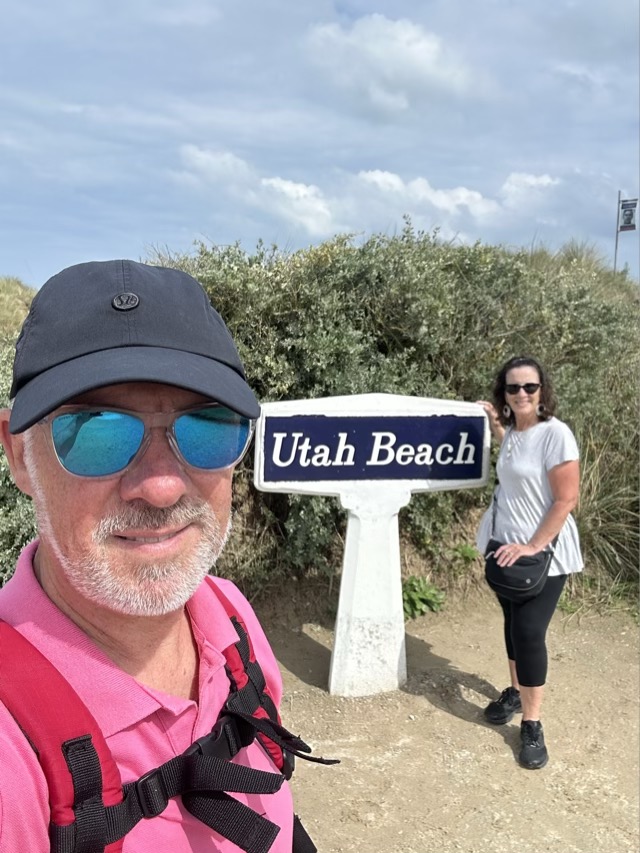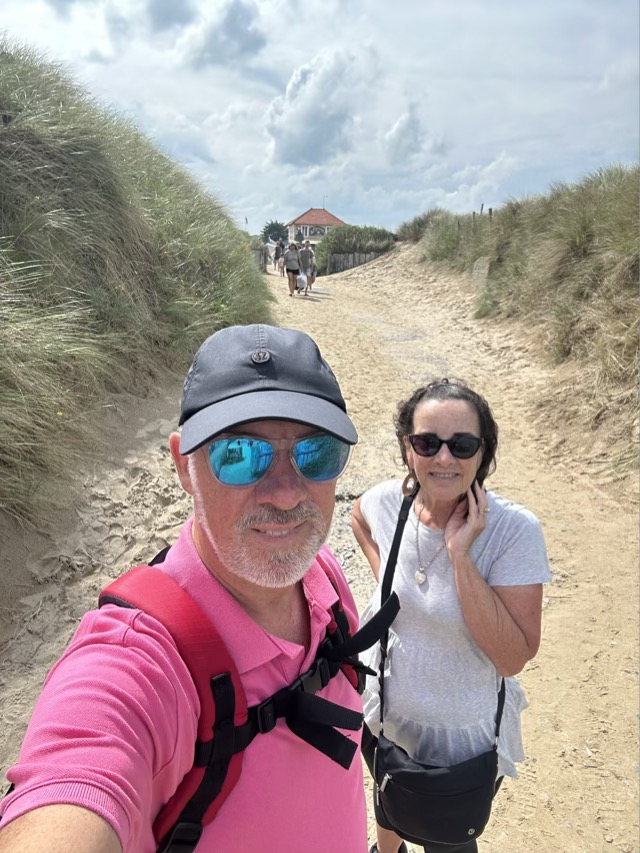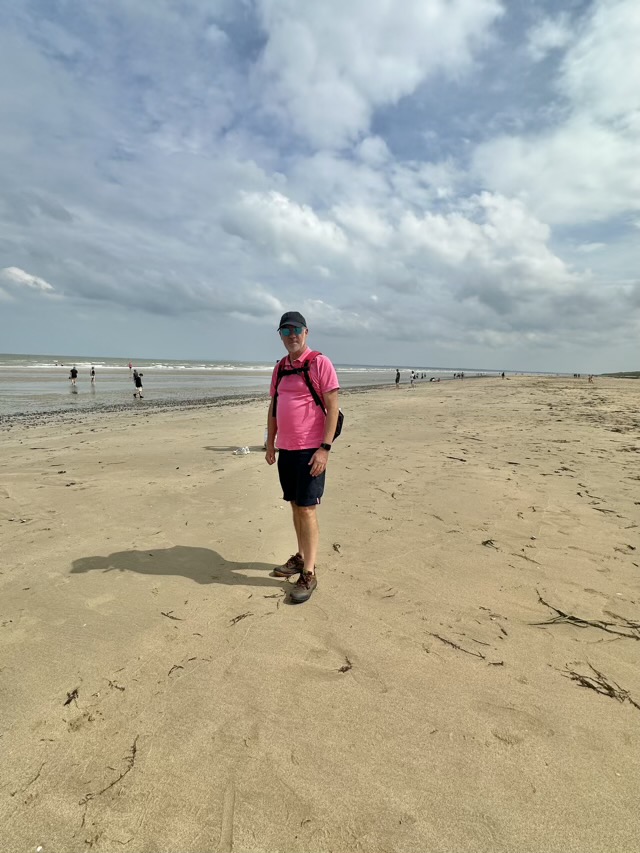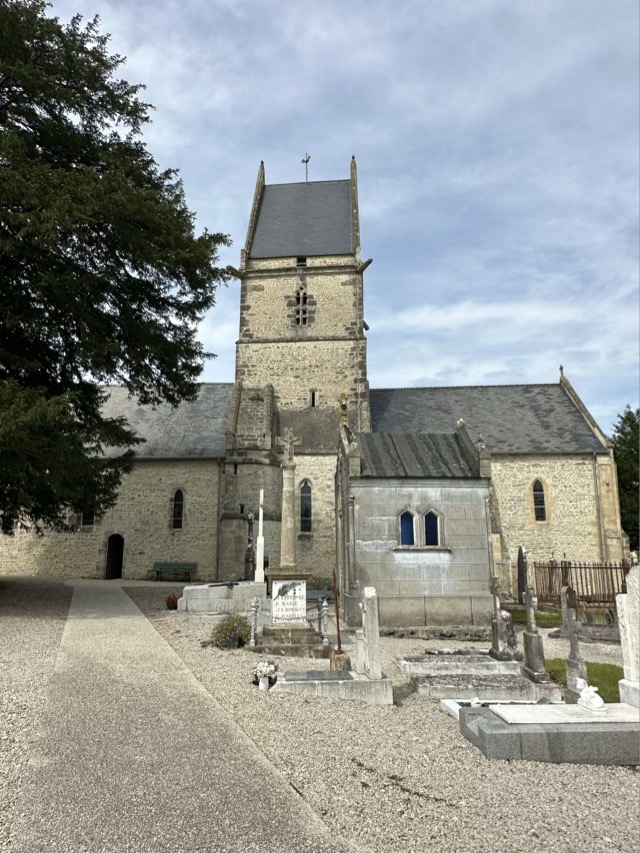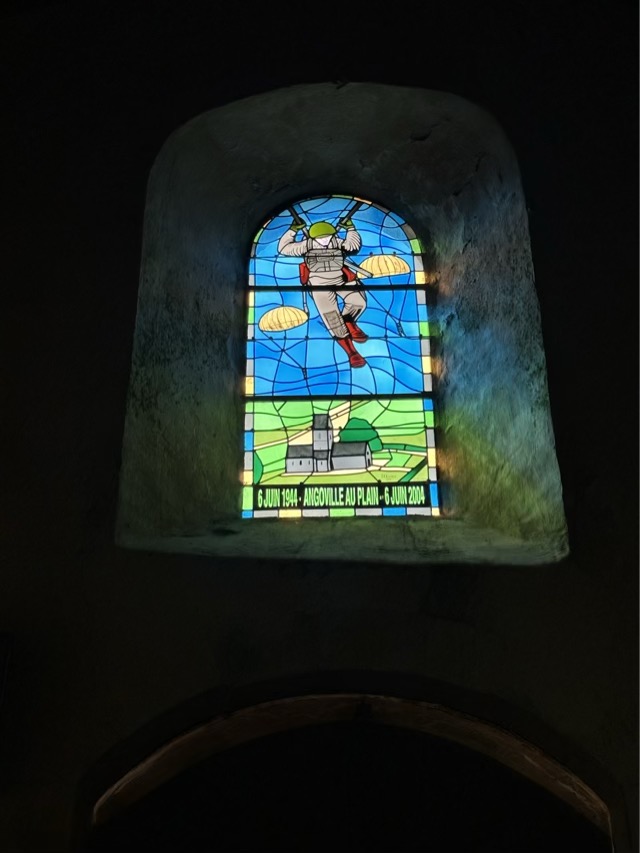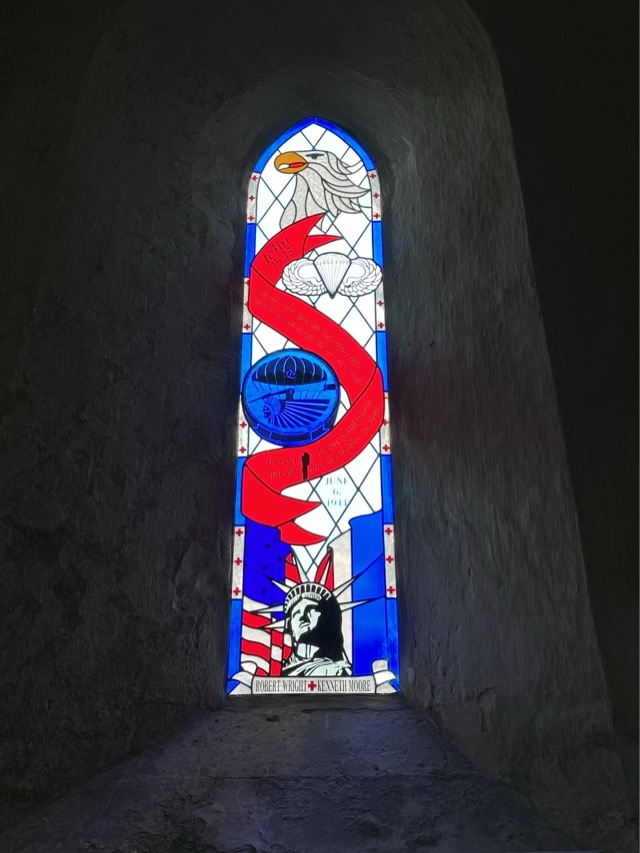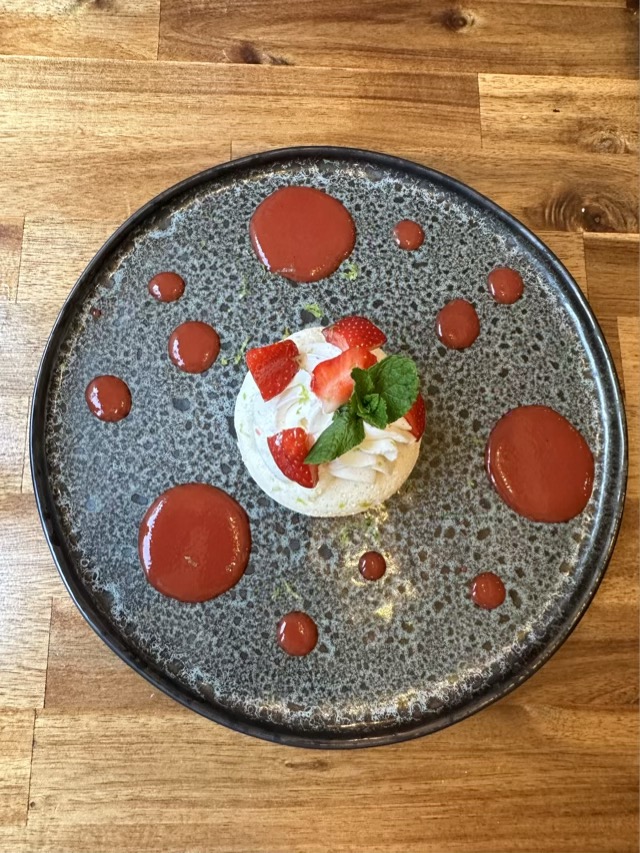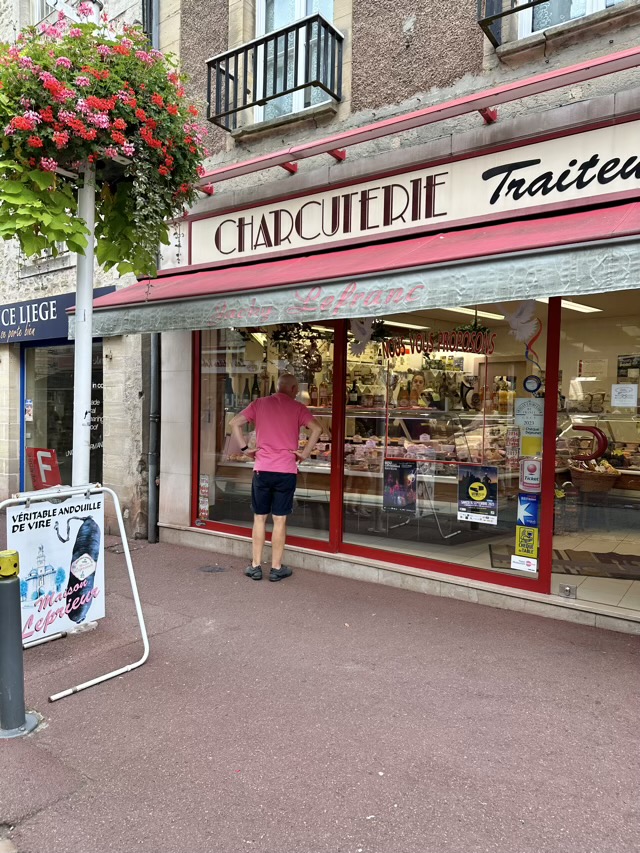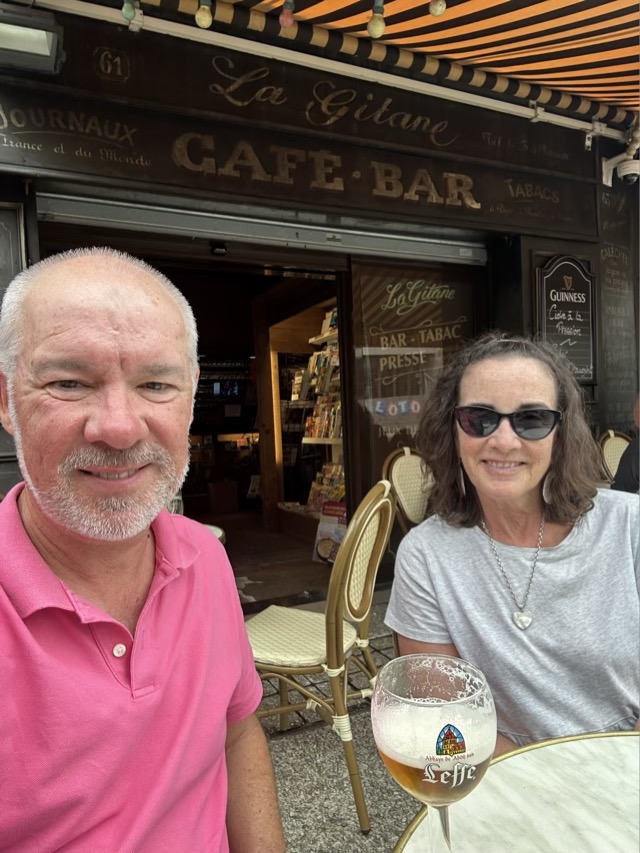Wed 16th Aug: Honfleur ⇒ Bayeux
Today was a day of travel from Honfleur to Bayeux. The journey was only about 2 hours but we were filling in the time between the Honfleur check out and the Bayeux check in with visit to some sights along the way.
Our first stop was at Beuvron-en-Auge which was a small village but what it lacked in size it made up in beauty as the streets are lined with the most picturesque 17th and 18th century half-timber houses. We didn’t stop for long, just enough to have a bit of a stroll and for Mark to have a coffee, and this seemed to be what all the other visitors were doing.
Our second stop was at the Caen Memorial Museum which focuses on events covering the origins of WW2, the D-Day landing, the Cold War and through to the attack of September 11, 2001. This was a huge museum and you really need to allocate a minimum of 3 ~ 4 hours for a visit and we only had 2 hours but we scooted through in the time we had but only just touched on the events of WW2 and a bit of the D-Day landings. The Museum is located not far from the D-Day landing beaches and on top of an old German bunker that you are able to visit. The museum is packed with items that bring forth the cruelty and reality of war; the shoes and a school bag of two of the Jewish children rounded up as part of the Holocaust were particularly confronting. The audio guide narrative and displays were excellent and this is a museum well worth visiting if you’re ever in the area. Just make sure to allocate enough time to get the full benefit from the immersion.
It was only 30 minutes on to our accommodation in Bayeux which was sourced through Booking.com and was a one bedroom with terrace apartment. Bayeux is the most beautiful medieval town and the magnificent 11th Century Norman / Gothic Cathedral is one of the first structures you see when you enter the town. This is another with links to William the Conqueror as it was built by his brother Odon, who was Bishop at the time.We eventually found our apartment and we were pleased to find it in a great location and clean and modern.
It was near 4 pm by the time we had settled in and Mark went for a bike ride whilst I had a rest; the morning at the Museum had taken it out of me. The next thing I new it was 6 pm and so, with a decent rest and Mark just back from his ride, I set off to explore Bayeux. I ventured up to the Cathedral and explored the streets around there before catching up with Mark where we went in search of a dinner venue. Le Volet qui Penche came up as an option so we settled on that and we weren’t disappointed, both our meals were delicious. It was then back home for another early night in the hope we would both be firing on all cylinders for tomorrow.
Thurs 17th Aug
It was a clear morning so Mark took another bike ride but I was still in go-slow mode. However, I was feeling much better which was just as well as we had a 2hr walking tour of the Old Town area of Bayeux with Discovery Walks Bayeux.
Our guide for the walking tour was small business owner, Christele, and she was excellent. She was energetic, very engaged, with a sharp wit and sense of humor and she took our small group around the Old Town area of Bayeux linking all the key aspects of the history of the area. This was no small feat given that it spanned from the pre-Christian Celtic era, through to the Romans, then the Normans, on to Medieval time and then through to WW2. It was fascinating to learn that Bayeux had been spared a lot of damage during the D-day campaign as the bombs were blown off course by the notorious high winds of the area and so the town escaped severe damage. Bayeux had actually been mostly an administrative center for the Germans during the war and there were only about 20 or so Germans left by D-day, and Christele said they were more likely to be pen-pushers and not soldiers, so their contribution to the event that day was to fire off a few bullet rounds that damaged the building opposite; but that is really all the damage the town suffered during this campaign. The town had many large buildings, which was thanks to the 17th Century Bishop who had also been known as ‘The Bishop with a trowel’, so Bayeux was chosen in the immediate aftermath of the D-day landings as a place to house and care for the many soldiers that were wounded during the campaign. Christele gave a most wonderful tour, loaded with many interesting facts and anecdotes, and I would highly recommend this to anyone visiting Bayeux.
It was after 11:30 by the time our tour finished so we stopped off at a cafe to rest our feet and plan the afternoon. Since our arrival in Bayeux this planning had evolved around timing the meter for the paid car parking which needed to be topped up every few hours. Luckily though, our tour guide had given us a hint about where we could access unrestricted parking so that was one problem sorted. We worked out that we would be able to fit in a visit to the Bayeux Tapestry Museum before the current paid meter parking ran out.
The Bayeux Tapestry is an incredible piece of art and one theory attributes this to be the work of Queen Matilda, William the Conqueror’s wife, to celebrate her husband’s victory in the Norman Conquest of England, also referred to as the Battle of Hastings. The other theory is that it was commissioned by William’s half brother, Odo, as the tapestry had been found in his Bayeux Cathedral. The tapestry is 70 m long and 50 cm wide and is made up of 58 scenes that detail the events of William, Duke of Normandy, challenging Harold II, King of England, for the throne. It was after this battle that William was then referred to as ‘William The Conqueror’ as prior to this he was often referred to as ‘William the Bastard’ due to his illegitimate birth status. The Tapestry is well worth seeing and is one of the main attractions in Bayeux. You receive an audio-guide with you entry ticket and the commentary explains the events unfolding with each scene as you stroll along the dimly lit and narrow U-shaped corridor, with all the other tourists, where the tapestry is displayed.
It was about 1.30 pm by the time we left the Tapestry museum and we headed back to the apartment for a bit of a rest and to have some lunch. Mark took this opportunity to move the car and was able to successfully find the unrestricted parking area our guide had suggested so that was good news. It was during lunch we realized that two days in Bayeux is not enough time to do justice to visiting the region; you really need a minimum of three full days, or more. We had a full-day D-day landing tour booked for tomorrow, our second full day, so that only left this afternoon to try and complete three other key attractions; Bayeux Cathedral, The Museum of the Battle of Normandy and visiting the Bayeux War Cemetery.
We headed to the Cathedral first and, if we’d had more time we would have taken a 10 am morning walking tour of the Cathedral but we had to make do with just having a stroll around the space ourselves. We then walked up to the Museum and were lucky that a 20 minute explanatory movie, in English, was just starting as we arrived. This proved to be a lucky turn for us as it, basically, summarized the whole contents of the Museum given that it covered the lead up to the D-day landings, the day itself and, then, the days following D-day. I say ‘lucky’ as the Museum is absolutely jam-packed with information and memorabilia from the period but I think it would take a year to read all the information on the presentation boards and I had absolutely hit a wall. I’m not sure if it was that I was still recovering from my recent bout of whatever or if I was just a bit tired but I couldn’t take in another bit of written script. So, it was lucky for me that I’d seen the movie! Mark persevered a bit longer but I found a chair, sat down and zoned out until Mark had finished.
The Bayeux War Cemetery was just a bit further along from the Museum and this was another depressing tableau of endless rows of crucifixes marking the 4,648 graves of, mostly very young, Commonwealth soldiers killed during WW2, and with the majority (about 4,000) being British. It was depressing; I could never imagine declaring a war and sending the sons and daughters of others off to fight.
It was only 5 pm by the time we left the Cemetery so we went back to the apartment for a while before heading out to dinner. We settled on La Table du Terroir (no website) for dinner which was pleasant enough but not a place you’d say is a must-visit venue. It was then an early night for us as we had a full day tomorrow with our D-day landing tour. I hope that the wall I’d hit earlier today was gone by tomorrow!
Fri 18th Aug
Today was our day for the D-Day landing tour and was one of the main reasons for us being in this area in the first place. When selecting which D-day tour you want to take you generally have the option of choosing one with a focus on the American beaches or one on the British and Canadian beaches. It had been suggested to me that the American tour was more detailed, due to their significant contribution, and also had less down time in wasted car travel so I chose this version.
Our guide for the day was Juliette, from Bayeux Shuttle, who seemed rather young for taking such a tour but I kept an open mind. There were 6 other people on the tour and it will be of no surprise when you hear they were all Americans. I became a bit anxious, however, when our group of 8 was loaded into the minibus and we proceeded to drive for about 30 minutes without any proper introduction, orientation or explanation about what to expect on our full day tour. Juliette made chit-chat with the passenger in the front seat beside her but, as her microphone was not working properly, that was all that really possible. Once she did start with a commentary I noted to Mark that it was like she was reciting a script from rote. We found out later that she was an intern and training to be a tour guide and was still just learning all about WW2 history. My initial observations were just validated. Juliette gave small dissertations at each of the stops but there was mostly silence in the car whilst on the long driving segments which I thought was a lost opportunity for embellishment and enhancement of the commentary, but this would likely only be possible with experience which poor Juliette was still trying to gain. I was rather disappointed as the day was a significant cost for us ($250 AUD per person) and something we had given a lot of thought to and one of the main reasons we were in the area and it was a lost opportunity for us to have a full and meaningful experience of this important period of world history. I do understand the need for students to learn but I was sorry our one day here came at that expense. I don’t think I would send such an inexperienced intern out on such a significant full day tour if it was my business.
The first fact I learned on the day was the origin of the naming of the landing beaches. President Eisenhower named the US landing beaches Omaha and Utah as these were the home locations of two Privates he spoke with and Prime Minister Winston Churchill named the three Commonwealth beaches after fish. Yep, fish! Goldfish, Swordfish and Jellyfish. It was no surprise that the Canadians didn’t want to land on a beach called Jellyfish so this was later changed to Juno.
Our tour, being an American one, focussed on visits to Omaha and Utah beaches. Omaha was the least successful of the initial campaigns as the allied bombing raids had failed to take out much of the German infrastructure of bunkers, and artillery. The bombing raids on Utah were more successful though and so access to this beach for the Allies was less fraught and therefore quicker and more successful.
Our day was spent visiting Omaha and then Utah beach, inspecting the bunkers that still remain at Omaha beach, as well as visiting the American War Cemetery. Throughout the day we heard stories about the contribution of different soldiers. It was heartbreaking to see so many smiling and very young faces, shining out from their service photos, but to then hear about their subsequent tragic and brutal death. There were a few tales that had a happy ending but they were by far in the minority. Our lunch stop was at Saint Mere-Inglese which, being right behind Utah beach, was the first French town to be liberated by the Allies.
It was after 5 pm by the time we got back to Bayeux and I’d like to say it had been a great day but it wasn’t. We got the bare threads of some events but I would recommend others who may visit here to investigate either the Overlord or Gold tour options if visiting the US D-day beaches. We headed back to the apartment for a while to have a rest and then ventured out to La Normande for dinner and this was a lovely way to finish off our time in Bayeux.
We had loved our time in Bayeux and this is somewhere I would urge all to try and visit but, as mentioned earlier, we could have done with another full day here. I consider that you need two days to leisurely explore Bayeux and then one for a full-day D-day tour. We depart tomorrow for St Malo but plan to visit Mont Saint Michele on the way.
